BMW: 11 women who shaped the automotive world
Women in Automotive: whether through inventions, technical innovations, leadership, courage or inspiring successes behind the wheel – we present eleven leading women who have had a significant impact on the allure of automobiles.
Throughout the history of the automobile, female pioneers have played a key role in the successful development of the driving pleasure we enjoy today.
The inventor of the windshield wiper was a woman, as were the inventors of vehicle heating and of Kevlar fibers. Women made pioneering trips with the first motor vehicles around the dawn of the 20th century. The first circumnavigation of the globe in a car was made by a woman in 1929. The first trans driver to finish the 24-hour race around Germany’s legendary Nurburgring track was a woman – who in doing so broke through into the mainstream and set herself up as a role model.
All these achievements are closely linked to the biographies of amazing women from all over the world. Read on to find out about eleven impressive characters who left their mark on the automotive industry and motor racing.
Women in automotive: 11 female role models
- Wilhelmine Erhardt
- Stephanie Kwolek
- Clärenore Stinnes
- Mary Anderson
- Bertha Benz
- Margaret Wilcox
- Danica Patrick
- Suzanne Vanderbilt
- Charlie Martin
- Lella Lombardi
- Jutta Kleinschmidt
1. Wilhelmine Erhardt
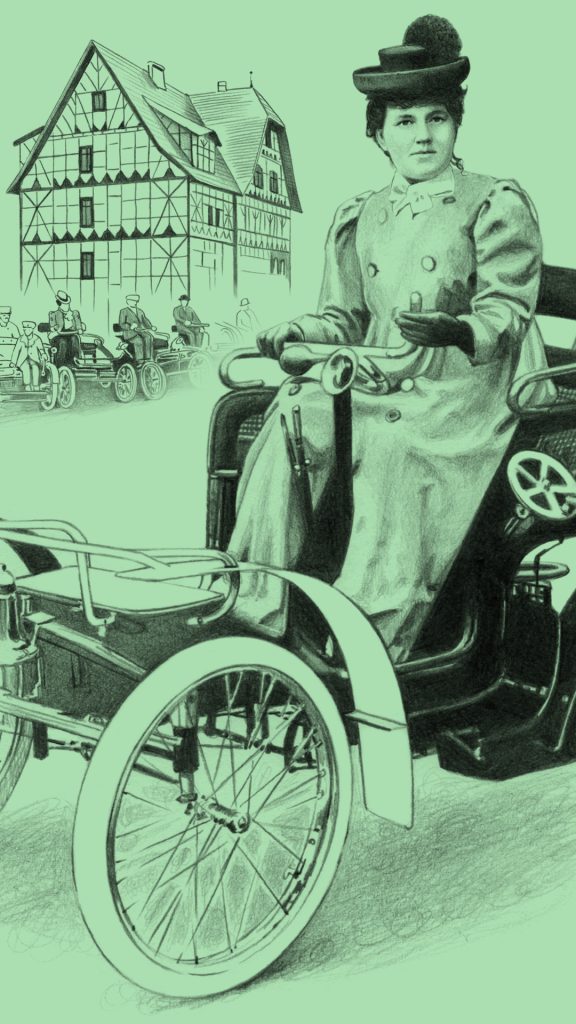
Throughout the history of the motor car, women have been there, playing key roles. Yet what we now take for granted was unusual at the beginning of the automotive age.
The emerging motor vehicles were considered a male domain. When, in the spring of 1899, the Eisenach vehicle factory in Germany set out on the first major outing with all of the motor vehicles produced so far, Wilhelmine Ehrhardt, the wife of the factory manager, was behind the wheel of one of the four Wartburg motor vehicles. She enjoyed the astonished faces of passers-by, as Matthias Doht, Chief Executive of the Automobile World Eisenach Foundation and an expert on Germany’s first female car driver reveals.
Wilhelmine (August 23, 1866 – February 23, 1945) had a very confident personality, and it would be difficult to put the brakes on her enthusiasm for all things automotive. When Gustav Ehrhardt signed up with his newly developed Wartburg racing car for the first long-distance cross-border trip – from Innsbruck, Austria to Munich, Germany on July 23, 1899 – his wife would accompany him. The mountainous route from Innsbruck to Munich through the Inn Valley via Kufstein and Rosenheim was very demanding, but for Wilhelmine, it represented a welcome challenge.
Wilhelmine would have to wait almost a year for her dream of starting as the actual driver in a motor race. But her patience would pay off. On August 3, 1901, she wrote motorsports history with her participation in the Eisenach – Meiningen – Eisenach long-distance automobile trip through Germany’s Hainich mountain range. Despite an inferior engine, she only narrowly missed out on the podium.
2. Stephanie Kwolek
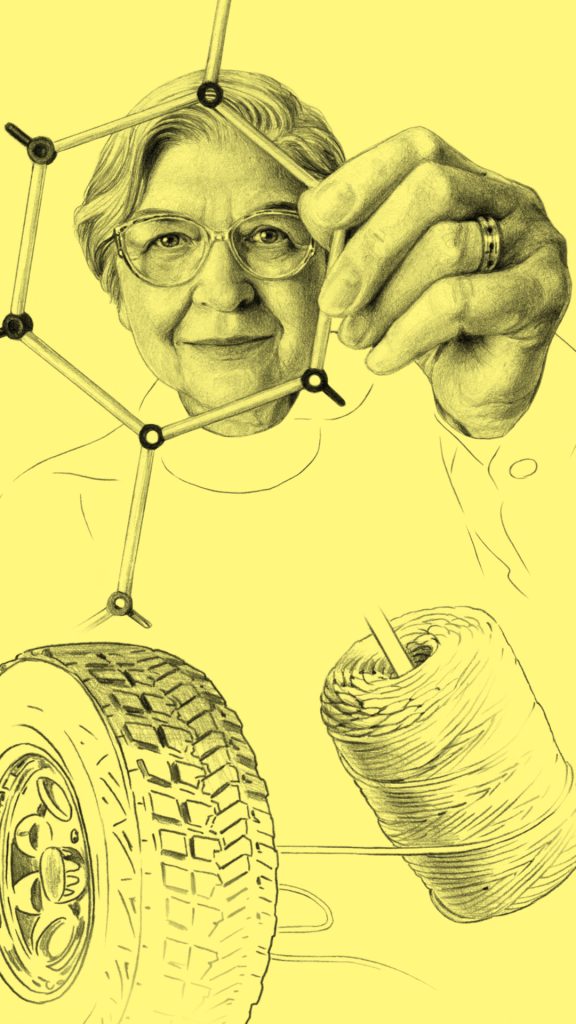
On November 22, 1968, the German Patent Office received patent application DE 1810 426, entitled “Compound and fibers or threads made therefrom”.
What was specifically described in the patent was a super-fibre that is still used in fields such as automobile construction and space travel, and in bulletproof vests today. The “mother” of this invention was the chemist Stephanie Kwolek (July 31, 1923 – June 18, 2014).
To finance a medical degree, she accepted a research position at DuPont’s textile fiber laboratory in Buffalo, New York. In the early 1960s, she worked on a fiber for reinforcing radial tires at the company’s testing station there. The work consisted of manipulating strands of carbon-based molecules to make larger molecules (polymers).
One day in 1964, Kwolek had some trouble converting a solid polymer into liquid form. Instead of the clear, syrupy mixture she expected, the liquid was thin and opaque. She persuaded another scientist to “spin” the liquid in a rotary evaporator, a machine that removes liquid solvents, leaving the fibers behind. And this “happy accident”, as she later described it, was how she discovered a material that proved to be five times as strong as steel, yet with the same weight and fire resistance.
Kevlar fibers combine flame and temperature resistance, strength, stiffness and other properties that can help make even better filters, belts, seals and other components for the automotive industry – such as tires. When used in finishing layers or intermediate structures, Kevlar fibers ensure extremely high dimensional stability, even at high temperatures and speeds, something that is crucial for high-performance tires. Further advantages are the reduction in driving noise and a reduced rotational weight, which leads to a reduction in engine load. Inventions by female engineers like Stephanie Kwolek have helped to lay the foundations for the development of the automotive industry.
3. Clärenore Stinnes

Clärenore Stinnes (January 21, 1901 – September 7, 1990) is another of the great women of automotive history.
Stinnes was a girl from a good family. She always believed that women could do what men could do: “We’re not better, but at least as good,” she once said in an interview.
The courageous daredevil made sure that her name was known around the globe and with it the power of women. At the age of 26, Clärenore Stinnes embarked on her greatest adventure: to be the first person to circumnavigate the world in a car. Her tour in a 34.5-hp Adler Standard 6 through ice and heat, mud and scree took 25 months. There were often no roads, maps, gas stations or workshops. The fact that this life-threatening expedition was completed was due in no small part to the stubbornness of a woman for whom turning back was not an option.
The odometer showed 29,054 miles (46,758 km) as Stinnes and her companion, Swedish cinematographer Carl-Axel Söderström, crossed the finish line in Berlin on June 24, 1929. Stinnes was the first to take the risk and drive around the world by car – through 23 countries. Leaving from Frankfurt in Germany, the pair headed east: through the Balkans across the Caucasus to Siberia, through the Gobi desert to China and Japan, over the Andes and across the USA, before finally returning to Europe by ship.
4. Mary Anderson

The next name in our series of role-model women in automotive history owed her invention to her powers of observation.
While navigating the streets of New York City, Mary Anderson noticed that drivers had trouble in bad weather. In rain and snow, they constantly had to get out to wipe their windshields. To the young woman, it was clear that an automatic wiper blade was needed.
In 1903, the same year as contemporaries Robert Douglass and John Apjohn, Mary Anderson applied for a patent on her invention. The only inventor with a working device, she was granted her patent. On November 10, 1903, the US Patent Office granted Mary Anderson US Patent Number 743,801 for her “Window-cleaning device” for automobiles and other vehicles “for removing snow, rain, and sleet from the glass in front of the motorman.” Her device had a lever at steering wheel height that the driver could operate by hand. If the lever were operated, a spring-loaded swing arm with a rubber band would be actuated and then returned to its starting position.
On receiving her patent, Anderson tried to sell it to a Canadian manufacturing company, but the company refused on the basis that the device would have no practical use. Although mechanical windshield wipers were standard equipment on cars by 1913, Mary Anderson never profited from her idea. Nevertheless, as the inventor of the windshield wiper, Mary Anderson was one of the women who helped lay the foundations for the progress that has taken place in automotive engineering – and her engineering vision back in the day still helps every driver today to have a clear field of vision for a safe journey in any weather.
5. Bertha Benz

In the whole history of women in the automotive industry, Bertha Benz is certainly a leading figure and a pioneer.
It wasn’t Carl Benz but his wife Bertha who ensured the success of the automobile – it was she who completed the first successful cross-country trip in a car in August 1888. What did she take with her? Her sons and a big slice of guts and self-confidence.
Let’s rewind a little:
Germany’s Carl Benz invented the automobile in Mannheim in 1886, before registering the vehicle under German patent number 37435. The response, however, was not as euphoric as expected. In fact, there was a distrust of this new, horseless carriage. What was he to do? At that point, Bertha Benz seized the initiative, got behind the wheel without further ado and drove the vehicle 66 miles (106 km) from Mannheim to Pforzheim.
This was a courageous undertaking, as such a journey was a real adventure at that time. There were only a handful of paved roads – most of the way she had to steer the car over uneven dirt roads. As there were no road signs either, railroad tracks helped with orientation, while a hatpin and garter belt were pressed into service for necessary repairs at various points. In the end, this tour de force was a success, with further development of the patented motor vehicle and Bertha Benz successfully promoting her husband’s vehicle. The triumphant advance of the automobile could begin.
6. Margaret Wilcox
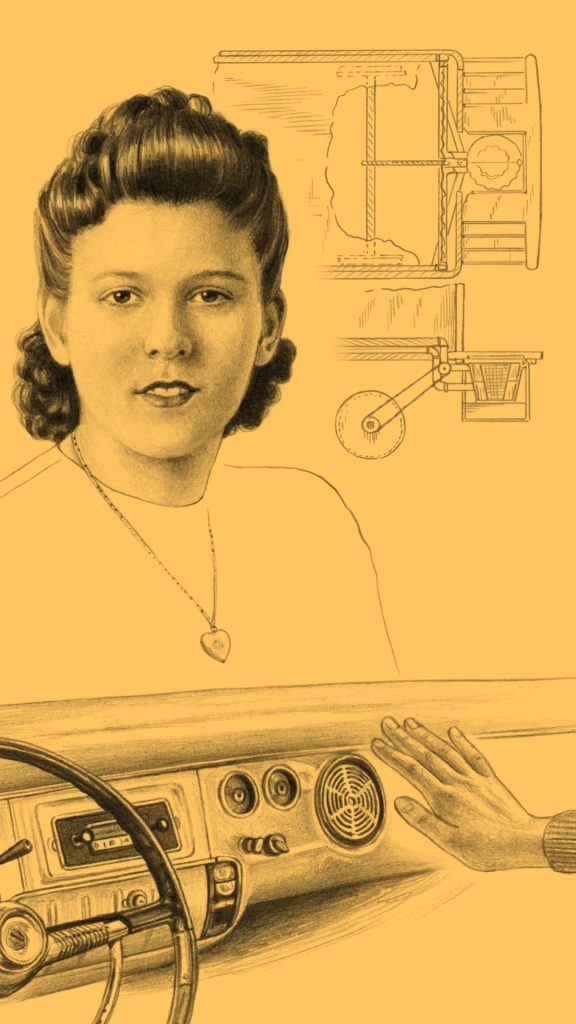
The fact that even the first automobiles could be counted as a comfort zone is down to the creative spark of an American woman.
Margaret A. Wilcox, born in Chicago in 1838, is considered to be the inventor of car heating. Wilcox was one of the first female mechanical engineers and was granted numerous US patents for her inventions.
In the fall of 1893, she applied for a patent for her invention of a car heating system, which was registered on November 28, 1893. Her system consisted of a combustion chamber under the car and a system of pipes beneath the passenger compartment through which heated water was fed.
This important invention for the automotive industry killed two birds with one stone: It made driving easier in foggy and cool weather by keeping the windows fog-free and the interior of the car at the desired temperature – which of course also made the driving experience both more pleasant and safer.
7. Danica Patrick
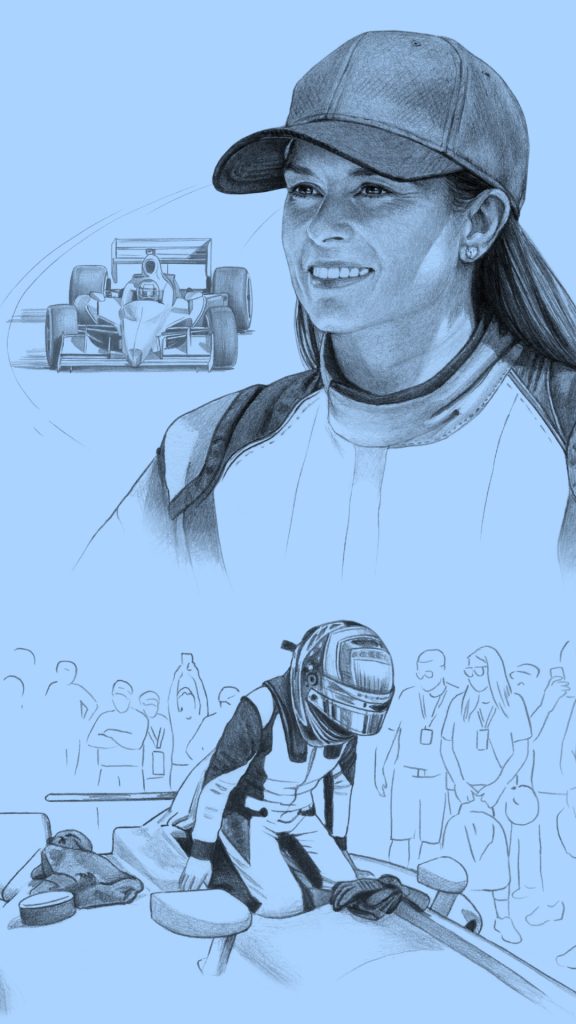
Danica Patrick has demonstrated impressively just how fast and successful women can be on a racetrack.
The female race car driver, who hails from Wisconsin in the US, is one of the most successful women in NASCAR and IndyCar motorsports. Between 2005 and 2018 she was active in both race series. Patrick contested her first IndyCar race at the Homestead-Miami Speedway in 2005. In 2008 she celebrated her first and only IndyCar win at Motegi, Japan. It was an exceptional performance. Her best overall result was ninth place in 2009 – a season when the female car racer also took third place at the Indy 500 and eighth place at the 24 Hours of Daytona race. In total, Patrick contested 116 races in the American race series over eight years. In so doing, she secured seven podium finishes and three pole positions.
Patrick continued to drive the IndyCar series until 2011 but ventured into the NASCAR schedule at the same time. After two part-time years in the Xfinity series, Patrick drove her first full-time season in America’s number 2 stock car league in 2012, before graduating to the NASCAR Cup in 2013. Over seven years, Patrick contested 191 races. Unfortunately, she never managed to top the podium, but Patrick did manage seven top-10 finishes. In 2013 she also became the first woman to secure a pole position at the prestigious Daytona 500 race. Her brave decision of 2018 to quit at the right time was yet another example of her acting as a role model.
8. Suzanne Vanderbilt
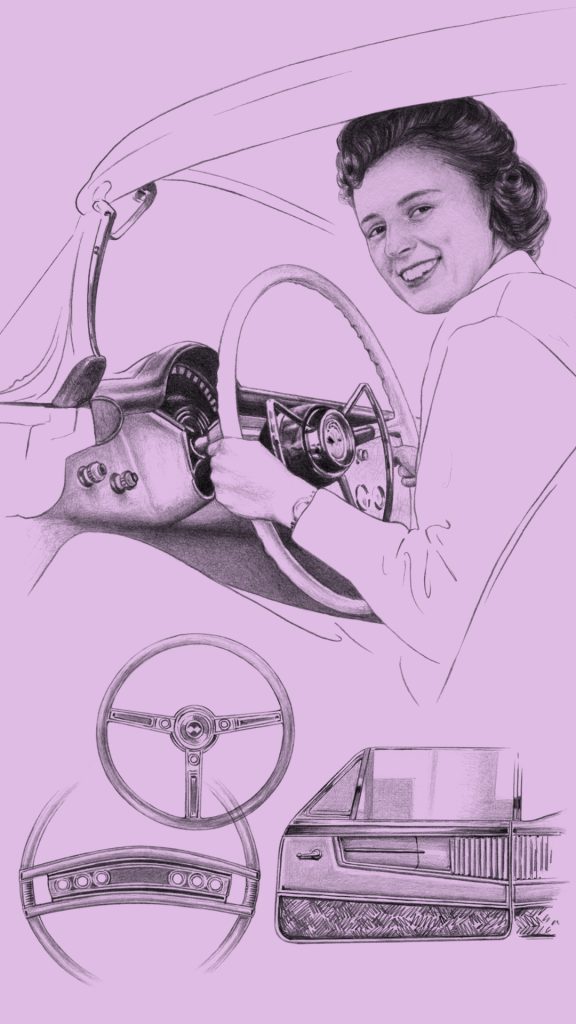
In the mid-1950s, General Motors launched its famous “Damsels of Design”, a group of ten women that the automaker brought on board in an attempt to better reach new, female consumers.
Unfortunately, America’s first all-woman design team was short-lived. Most of the designers left in the early 1960s after their department was taken over by Bill Mitchell, who allegedly said, “No women are going to stand next to any senior designers of mine.” Despite this pronouncement and the male-dominated automotive industry of the time, one of the original “Damsels”, Suzanne Vanderbilt, stayed on and tenaciously worked her way up the career ladder until she was named Chief Designer of Chevrolet’s Interiors Studio in 1972.
Vanderbilt worked as an executive on small cars such as the Nova, Camaro and Chevette. Unfortunately, at the height of her design career illness forced her to cut back on work and eventually take early retirement from GM in 1977. She died eleven years later at the age of just fifty-five.
What motivated her to remain in such a demanding field?
“What keeps a designer going is that you’re never satisfied, you’re constantly looking for perfection, for new and creative answers.”
9. Charlie Martin
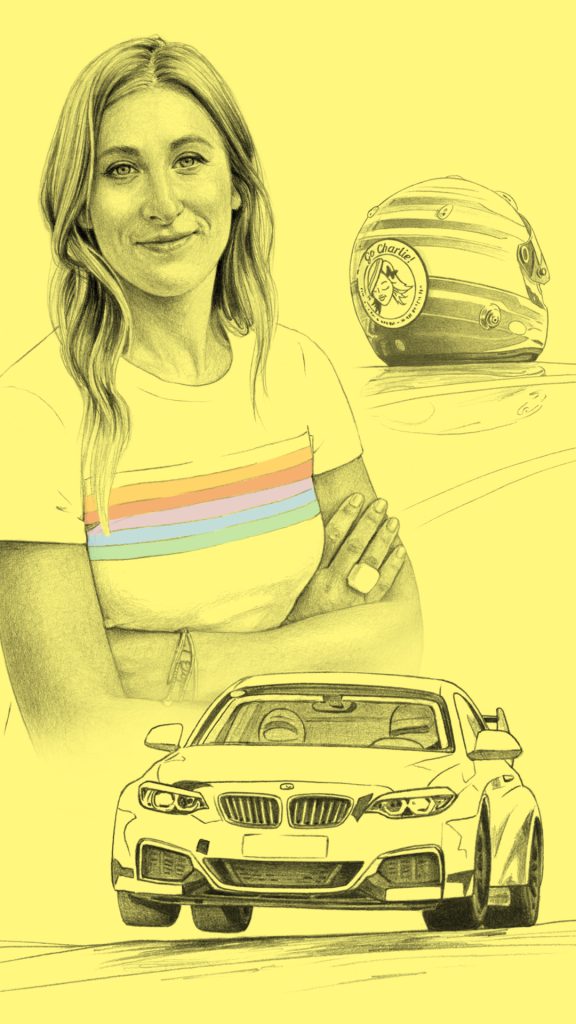
Charlie Martin made history at the 24-hour race around Germany’s legendary Nurburgring track.
With her BMW M240i Racing, she finished fourth in her class on the Nordschleife (or North Loop) section of the track. Her finishing position was secondary for the 39-year-old female race car driver, however, as she was driving for a bigger goal. What drives her is proving herself as a woman in a male-dominated sport. And it’s a very special goal because Charlie Martin was born as a boy in Leicester, England in 1981.
As the first transgender racing driver to finish this motorsport classic, the daring driver not only fulfilled a dream but also made herself a role model. Making a difficult decision and staying true to the course you are on takes courage.
She aims to share her courage so as to promote more diversity and change in motorsport and thus pave the way for increased female car racer numbers:
“If we have ambassadors for sport who are passionate about their values and convey the feeling that we should all be active in our own lives, then we can make a huge difference in society.”
10. Lella Lombardi
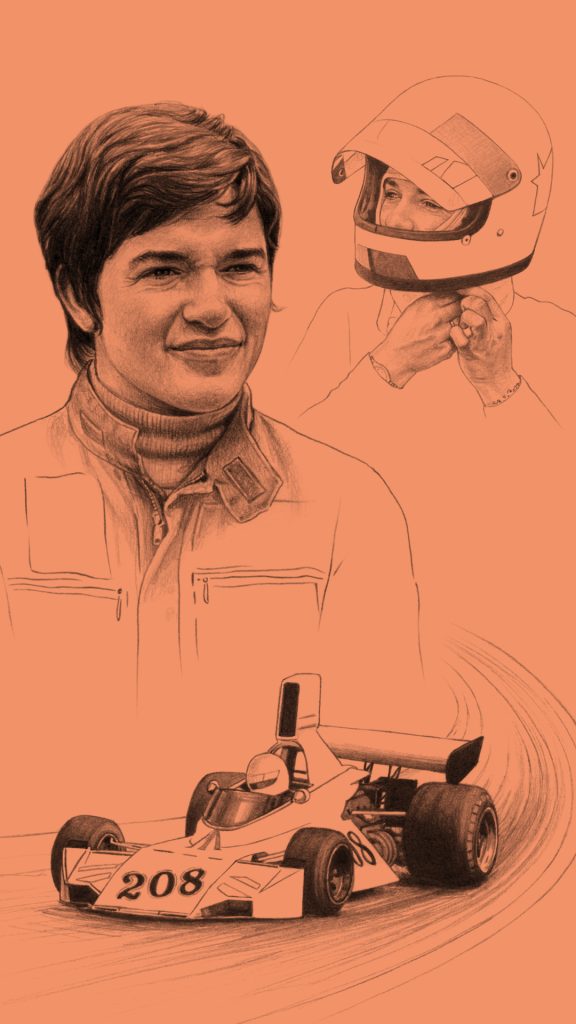
The impact of women in automotive spheres can also be seen in the history of the world’s number 1 motorsports competition.
In the statistics of Formula 1, Lella Lombardi (March 26, 1941 – March 3, 1992) is the only woman to have scored championship points. The route to becoming a female race car driver for this butcher’s daughter from Piedmont, Italy could certainly be described as circuitous.
Following a serious injury while playing handball, Lombardi was transported to the hospital by ambulance. She was so fascinated by its speed on that journey that she decided to try out motor racing instead of indoor sports.
Between 1974 and 1976, Lombardi drove twelve World Championship F1 races, finishing seven of them. She made her Formula 1 debut for the Allied Polymer Group team at the 1974 British Grand Prix at Brands Hatch but failed to qualify for the race. She started a Formula 1 race for the first time the following year: the 1975 South African Grand Prix at Kyalami, driving for the March team.
On April 27, 1975, the then 34-year-old finished sixth at the Spanish Grand Prix in Barcelona, earning half a World Championship point. To date, she is still the only woman to score World Championship points. She only received half a point (instead of the usual 1 point) for finishing 6th, as the race on the narrow Montjuic street circuit was prematurely terminated after a serious accident involving Germany’s Rolf Stommelen, who was leading the race at the time.
Besides her half a World Championship point, Lella Lombardi also holds the record for the highest starting number in Formula 1 history. The “208” on her car at Brands Hatch in 1974 was a reference to her sponsor Radio Luxembourg, which at that time broadcast on 208 meters medium wave. This record of the reserved yet ambitious Italian, who died of breast cancer a few days short of her 51st birthday in March 1992, will not be beaten – starting numbers in Formula 1 is no longer permitted to exceed “99”.
11. Jutta Kleinschmidt
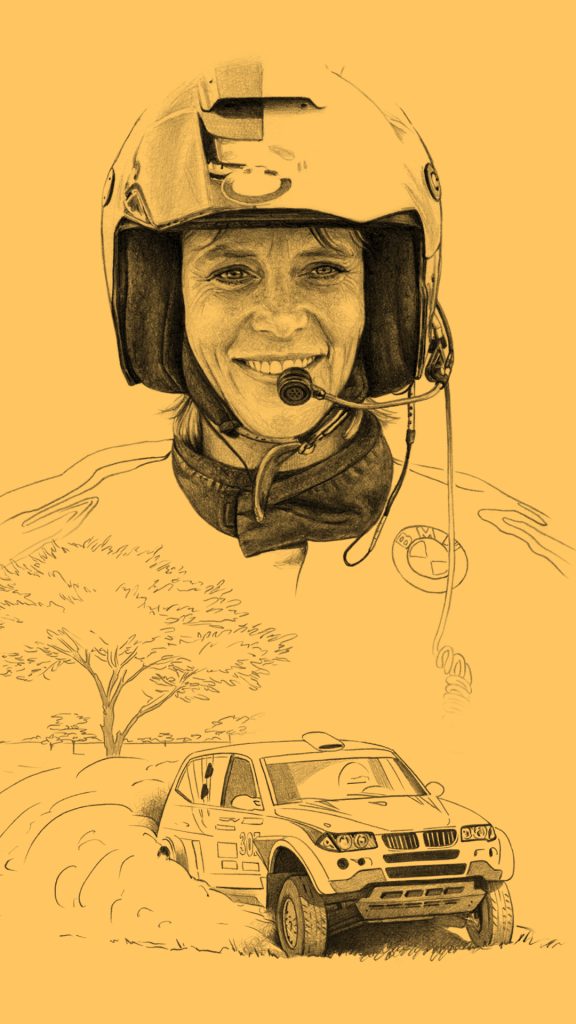
Jutta Kleinschmidt took any clichés about women in automotive settings and confidently banished them to one of the most remote and inhospitable places you can imagine – the Sahara desert.
She has been there and driven her way into the history books behind the wheel of a rally car. In 1988 she took part in her first Paris-Dakar rally on a motorbike, while in 2001 she became the first woman and also the first German to win the world’s toughest desert rally. Over a race distance of 6,600 miles (10,000 km), the Bavarian headed the field by 159 seconds in a Mitsubishi Pajero. Jutta Kleinschmidt subsequently took part in the exacting cross-desert race several times in a VW, before starting the 2007 Dakar Rally in a BMW X3 CC for the X-Raid BMW team.
With her combination of courage and technical know-how, she repeatedly left her mark on the race over almost 20 years. As a guest starter in road races and as an instructor, the passionate helicopter pilot has remained loyal to motorsports to this day. In addition, the female car racer now works as a motivational trainer, giving lectures and seminars for businesses. A powerful woman role model, whatever the situation.
Author: Markus Löblein; Illustrations: Oriana Fenwick
Originally published on bmw.com.
BMW’s awarded metaverse, Adidas launching NFTs and more top news in tech
BMW won a Webby Award for its Metaverse
We are proud to announce that BMW, BRAND MINDS event’s Innovation Partner has been recognized at the 2022 Webby Awards for Joytopia, the company’s Metaverse!
Congratulations to BMW for winning the 2022 Webby Award for Technology Virtual & Remote with Joytopia, BMW’s metaverse!
Joytopia is the world where BMW thinks out loud about the future: https://t.co/vNmXeeWtkI@BMW @bmwromania @TheWebbyAwards pic.twitter.com/MCNtjB3HeZ— BRAND MINDS (@brand_minds) April 28, 2022
Pixy, your friendly flying camera produced by Snapchat
Pixy, the pocket-sized, free-flying camera is Snapchat’s newest video and audio recording device.
It can float, orbit, and follow wherever you lead, without a controller or any set-up.
In Snapchat, shoppers can try on outfits using AR
Snapchat is offering consumers new places to shop using AR, both on and off Snapchat.
Through this technology, shoppers can try on even more outfits more easily, from the comfort of their own home, simply by taking a full-body selfie.
Adidas is bringing customers into the ozworld
The iconic footwear brand Adidas is inviting customers to follow them into its Metaverse at ozworld.adidas.com.
Here, customers can claim NFTs to get exclusive merch and unlock unique digital experiences.
Hey Into the Metaverse NFT holders,
It’s time to move into phase 2, claim your exclusive physical ITM merch at https://t.co/m70gU99NQA.
1/6 pic.twitter.com/7RLDQ0rS2b— adidas Originals (@adidasoriginals) April 28, 2022
Bored Ape Yacht Club is going mainstream with a movie trilogy
Coinbase will produce a series of animated short films called The Degen Trilogy featuring the apes in the Bored Ape Yacht Club.
“Bored Ape owners are invited to submit their apes for consideration as characters in the trilogy, along with made-up character descriptions that will be reviewed by an actual Hollywood casting director”, said Coindesk.
The trilogy will tie in to the launch of Coinbase’s NFT marketplace and will premiere at NFT.NYC in June.
CORPUS, the 5-story AR installation
CORPUS was developed by artist Nancy Baker Cahill, Creative Director at 4th Wall, a free, augmented reality (AR) public art platform exploring resistance and inclusive creative expression.
“My belief is that future life will involve embracing interconnected embodied sources of intelligence- microbial, artificial, and carbon-based”, says Nancy Baker Cahill about CORPUS, the 5-story AR installation.
It’s definitely amazing to look at!
Anyone who works in AR knows the potential and limitations of the medium. I am so proud of what we were able to achieve with CORPUS, a 5 story, anchored AR intervention in the historic Bradbury Building for @berggruenInst’s WWLB symposium. @anakin78z you and SED are ⭐️ pic.twitter.com/0EVT4va3Qi
— Nancy Baker Cahill (@4thWallApp) April 23, 2022
Looking to upgrade your business and prepare for the future?
Attend BRAND MINDS 2022!

Dr Josef Reiter (Managing Director BMW Romania) – We encourage a culture of taking initiative
BMW is a long-standing partner of BRAND MINDS events and its Innovation Partner for the 2022 edition.
Combining high-tech features with the sheer pleasure of driving, BMW is always looking towards the future, redefining innovation at scale through disruptive ideas.
To find out more about BMW’s strategy for innovation, Managing Director BMW Romania Dr Josef Reiter was kind enough to answer a few questions.

Managing Director BMW Romania Dr Josef Reiter
What is BMW’s VISION for the car of 2040?
Our long term goal is that BMW becomes the most sustainable car company in the world. Already since 2020, we have made sustainability and efficient resource management central to our strategic development direction.
We are the first car company that has clear CO2 goals for full lifecycle up to 2030, and we are also fully committed to the Paris Accord for limiting global warming by 1,5 degrees.
This important strategic shift has a significant impact on our business – we are now not looking for reduction and carbon neutrality for our production sites and the usage of our cars, but we aim for the most sustainable supply chain industry-wide, and circular economy is becoming a defining part of our strategy. To give you a clear example – sustainability, next to quality and price is becoming a defining criterion in selecting our partners and suppliers.
At the same time, we know that the future of cars will be electric and digital. “New Class”, a ground-breaking platform for cars that we are planning to launch until 2025, will redefine not only the way we build cars but also the way we use them.
Over half a century ago the so-called BMW New Class has redefined the brand and we are preparing now for a new revolution. In the last years, with models such as BMW i3, BMW i8 or the recently launched BMW iX, we showed not only our strength to innovate, but also our courage to explore new territories and completely new ideas.
This is why I am really excited about our strength to transform the car in the coming years – smarter, better connected, offering more intelligent services and clever natural interaction with the users, significantly more efficient and defiantly truly sustainable.
In this complete transformation process, we are not forgetting the main BMW magic – joy, the pleasure to experience the car, the driving pleasure.
What is BMW’s most important LEADERSHIP learning that has impacted its organizational culture over the past year?
Innovation requires courage. At BMW we have a saying – “It is better to request forgiveness, than permission.”
A big multinational corporation comes with a strong set of procedures and a highly elaborate structure that has high inertia against innovation and transformation.
In this context we encourage a culture of taking initiative, thinking like an entrepreneur in a big corporation. It may appear as an almost impossible balancing act, but there is a beautiful thing that defines BMW – we build cars because we are passionate, we love our cars, and we love driving at least as much as our customers. We use this passion to have the courage to act and take initiative.
What is the company’s strategy for ENVIRONMENT PROTECTION?
We are committed to looking at the environmental impact throughout the product lifecycle, from how the raw materials that we are using are produced, to improving the recycling of our cars and the use of recycled materials.
This transparent approach is the only way to achieve a real impact on the environment. And we have clear goals for every stage in the product life cycle – 50% reduction in global CO2 use-phase emissions by 2030, over 40% reduction in CO2 emissions during life cycle, including production and upstream supply chain.
We also want to lead when it comes to the circular economy: up to 50% use of secondary material is planned to be achieved in the coming years. This transformation comes with pursuing every detail: from working with our suppliers to improve the way they produce the steel and aluminium, for example, to looking into ways we deliver food every day to our tens of thousands of employees or the way we pack spare parts with environmentally friendly materials to reduce waste.
Environmental protection is an ongoing pursuit, a passionate hunt for improvement in absolutely every detail.
How is BMW using ARTIFICIAL INTELLIGENCE to maintain premium quality?
Artificial Intelligence, of course, is a huge factor in transforming how our cars are being used – from autonomous driving to an intelligent personal assistant that will develop more and more natural ways to interact with our customers – improved speech, gestures, learning our driver habits or even combining all these.
BMW already presented a prototype system where the driver can point toward a landmark and the car can immediately offer details about that. You can imagine a future where the driver simply asks: “I want a reservation for two at the restaurant on my left” and the intelligent system will set up everything.
AI is not only relevant for the user experience. Harnessing the power of big data is helping us with smarter production techniques and production planning and management. Artificial Intelligence is having a huge impact everywhere and will continuously be more relevant in the future.
What is the impact of BMW’s CUSTOMER CARE on people’s perception of the brand?
Customer care moves from the era of big, impersonal call centres to smart and individual solutions thanks to the power of digitalisation.
For example, we are already offering our clients video explanations created with their cars about the repairs that are done in the service – and this way they can view the procedure anytime on their mobile phone.
The quality of the customer’s car is a big part of a premium brand experience. I know that we still have a lot of work ahead of us in this field, but we have the advantage of better resources and structures compared with the new competitors that are coming on the market.
Name the most essential aspect in TEAM MANAGEMENT and improved performance according to BMW
We are a company with over 100.000 employees. Sometimes, big structures can be a barrier to fast transformation and innovation, which are so important in our industry today.
Flexibility – from the way we produce electric, plug-in hybrid and internal combustion cars on the same assembly line, to the way we interact inside our teams I believe is the defining aspect in our team management strategy.
The way we build, sell and use cars is changing dramatically and we need to adapt our business and team structures in the same way.
What is the LATEST NEWS about the brand our readers should learn?
We have exciting new products, like the BMW i4, which offers an electric alternative to our core portfolio, or the upcoming BMW i7, an electric and highly sophisticated luxury limousine.
In the coming month, we will be introducing the BMW 2 Series Active Tourer which comes with a completely new generation of internal combustion engines and a plug-in hybrid version that has a battery capacity comparable with our first generation of the electric model BMW i3.
At the same time, a significant revolution is coming in the interior of the car – including already a strong experience with remote software updates, the 8th generation of our user interface, BMW iDrive, or spectacular features such as BMW Theatre Screen, the biggest rear-seat entertainment system in history.
What are BMW’s Top 3 impactful INNOVATIONS that the company will roll out in the following 3 years?
The automobile is by far the most complex mass-produced system in the world. The impact does not come from a single innovation, but from our ability to integrate an extensive series of innovations.
When it comes to the product itself, I see 3 main fields of innovation. Sustainable development is very important, with high impact solutions of production steel or aluminium, for example, offering the potential for a significant reduction of hundreds of thousands of tons of CO2 each year.
Also very important – with the “New Class” we will make a significant step forward with the electric and digital car. We are investing constantly in other development fields, like AI algorithms or quantum computing development, that can have an impact in every field of our business.
In 2022, BMW and BRAND MINDS are shaping the business world of tomorrow
One of the most innovative car brands in the world and currently leading the global premium segment, BMW is a long-standing partner of BRAND MINDS events and its Innovation Partner for the 2022 edition.
Combining high-tech features with the sheer pleasure of driving, BMW is always looking towards the future, redefining innovation at scale through disruptive ideas.
The partnership between BMW and BRAND MINDS is founded on both brands sharing the same DNA: the commitment to provide world-changers with premium experiences.
As BMW is paving the way for a sustainable future, so is BRAND MINDS paving the way for world-changers to become leaders.
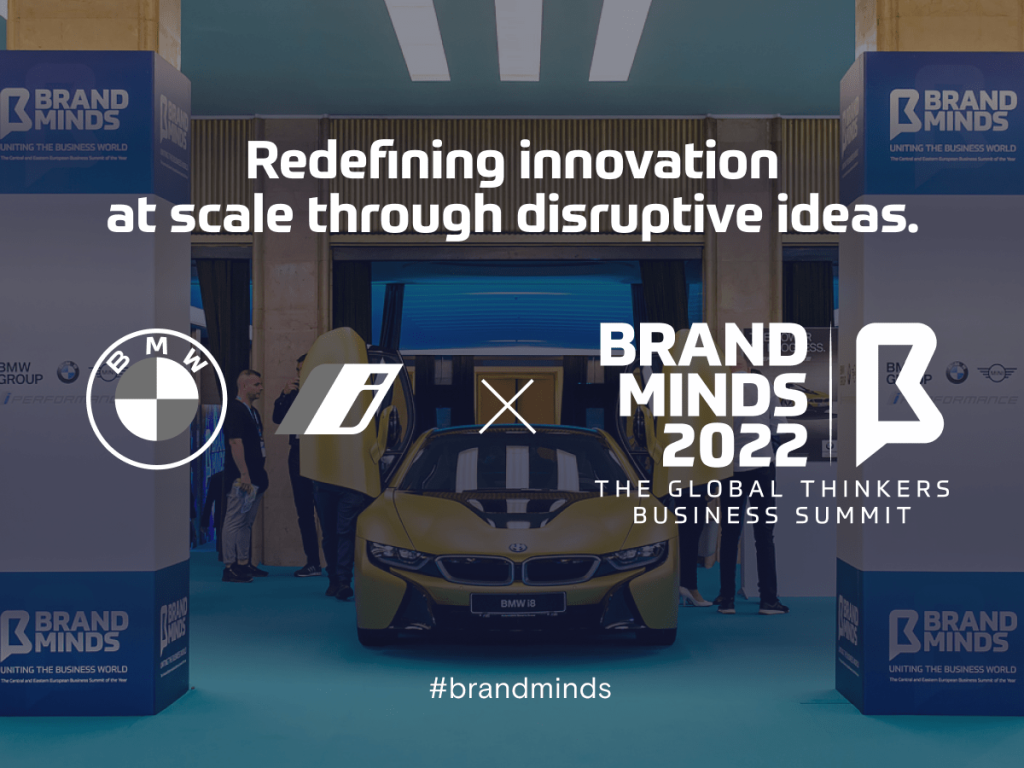
BMW & BRAND MINDS: A partnership for innovation
BMW is the pioneer of electromobility and green cars
BMW has a clearly defined presence – a manufacturer of premium sports cars.
It has design landmarks created almost 90 years ago, such as the unmistakable front kidney grille.
At the same time, it is a brand that has always drawn its power from the transformation that led to evolution. BMW evolved from a manufacturer of aircraft engines, switched to motorcycles and then cars. And from this point, BMW never stopped innovating. This is how the first ultra-sporty sedans in history were created, the BMW M models, the first premium SUVs, the BMW X range.
In this context, BMW continued to redefine itself and in recent years has been the pioneer of electromobility and truly green cars.
Dr Josef Reiter, Managing Director BMW Romania:
BMW history shows us many exceptional transformation stories that emerged from a courageous idea, which at first seemed too daring. This is how the first BMW M super–sport limousines were born when no one understood the need for them.
Today, there is an entire industry dedicated to these models. In the same way, the control system of the car through a screen was born – the BMW iDrive, something that no one had ever tried before. Nowadays, we cannot imagine a car designed without screen controls. A powerful idea can transform a company and it can redefine industries and change people’s lives.
BRAND MINDS is an inspirational event born with the same purpose – to give us strong ideas, motivation and to bring on stage the valuable people who create change.
Dr Josef Reiter, Managing Director BMW Romania
Dr Josef Reiter, Managing Director BMW Romania
7 inspiring tech innovations
Curious to discover the latest inspiring innovations in technology?
Then this article is for you!
1. BMW introduced the colour changing car
At CES 2022, BMW unveiled BMW iX Flow, the colour changing car.
The car was developed in cooperation with E Ink, the originator, pioneer and commercial leader in ePaper technology.
The body panels on the car use the same technology as the displays of e-readers.
The BMW iX Flow changes colour from white to shades of grey to ultimately black.
2. The tractor that is spraying weeds while protecting in-season crops
John Deere Technology has introduced See & Spray™ Ultimate, the industry’s only factory-installed targeted sprayer.
The sprayer is a high-tech precision weed-killing device that not only reduces herbicide use but also differentiates weeds from in-season crops.
See & Spray Ultimate is revolutionizing how farmers can manage weeds to improve yields, cost efficiencies, and profitability.
It sees, targets, and kills in-season weeds using advanced cameras and machine learning.
3. The flying car we are all going to drive in the near future
In a not so distant future, there won’t be any more traffic jams or waiting at lights – flying cars will take care of that.
SkyDrive is a flying vehicle that achieves quiet and zero-operating-emission air travel.
The vehicle is compact and lightweight, emissions-free and has vertical take-off and landing.
4. The lighting fixture that acts as a sound absorber
Slice is a light-emitting, sound-absorbing design object that combines innovative functionality with expressive form.
Created by Halskov & Dalsgaard for Zero Lighting, the Slice lighting fixture features a number of concentric discs covered in felt-like sound-absorbing fabric.
5. Metaverse tools to build your presence in the metaverse
Adobe has recently released a series of tools to build immersive 3D worlds in the metaverse: Substance 3D Stager, Substance 3D Art (Painter, Designer, Sampler) and Substance 3D Designer.
Substance 3D Stager helps creators build and assemble 3D scenes.
Substance 3D Art allows creators to texture 3D assets starting from real-life photos, design complex parametric materials with full authoring control, or simply pick up a brush and paint in 3D.
With Substance 3D Designer & Modeler creators are empowered to author dynamic geometry or sculpt their model as they would in a real-world workshop.
6. HSBC Bank to enter the Metaverse with the help of The Sandbox
One of the largest international banks in the world, HSBC, has inked a partnership with the leading metaverse project The Sandbox to help it enter the rapidly developing metaverse space.
HSBC will acquire a plot of LAND which is essentially virtual real estate in The Sandbox metaverse.
“At HSBC, we see great potential to create new experiences through emerging platforms, opening up a world of opportunity for our current and future customers and for the communities we serve. Through our partnership with The Sandbox we are making our foray into the metaverse, allowing us to create innovative brand experiences for new and existing customers.”
Suresh Balaji, Chief Marketing Officer, Asia-Pacific, HSBC
7. AI to help restore lost historical texts
DeepMind has introduced Ithaca, the first deep neural network that can restore the missing text of damaged inscriptions, identify their original location, and help establish the date they were created.
Ithaca is an AI-based program that explores how machine learning can help historians better interpret these thousands of years-old inscriptions.
Evaluations show that Ithaca achieves:
- 62% accuracy in restoring damaged texts;
- 71% accuracy in identifying their original location;
- can date texts to within 30 years of their ground-truth date ranges.
Looking to get more innovation examples delivered to your email?
Subscribe to our newsletter!
What are the 4 types of innovation?
Innovation – the #1 soft skill companies are looking for
Last year, the World Economic Forum in collaboration with LinkedIn released its 2025 Future of Jobs report.
This report maps the jobs and skills in the next five years.
As you can see below, innovation ranks at #1 in the Top 10 skills employers are looking for in an employee in 2025.
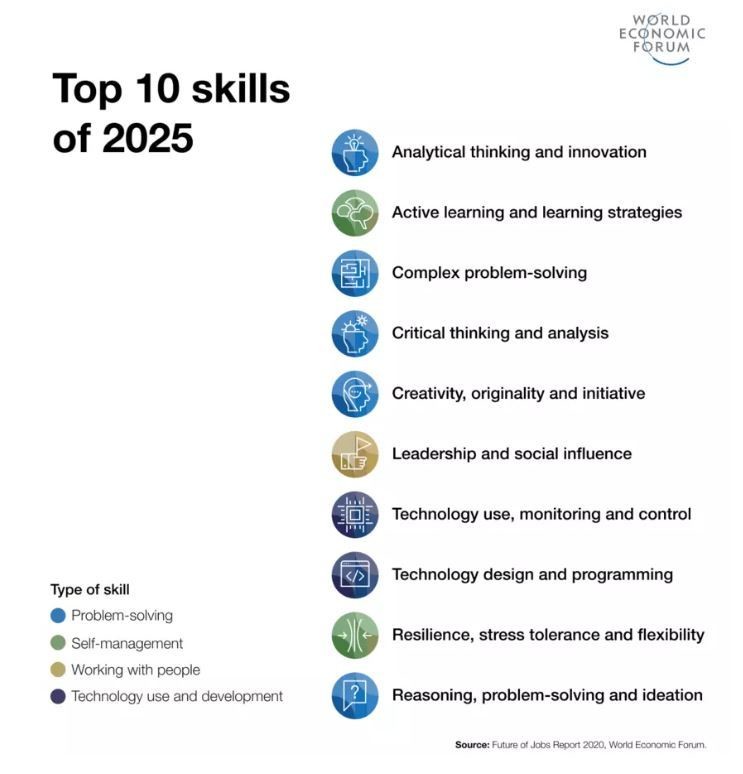
In 2020, the top most sought-after skill was creativity.
Why are employees expected to have analytical thinking and innovation skills? Why is creativity not enough?
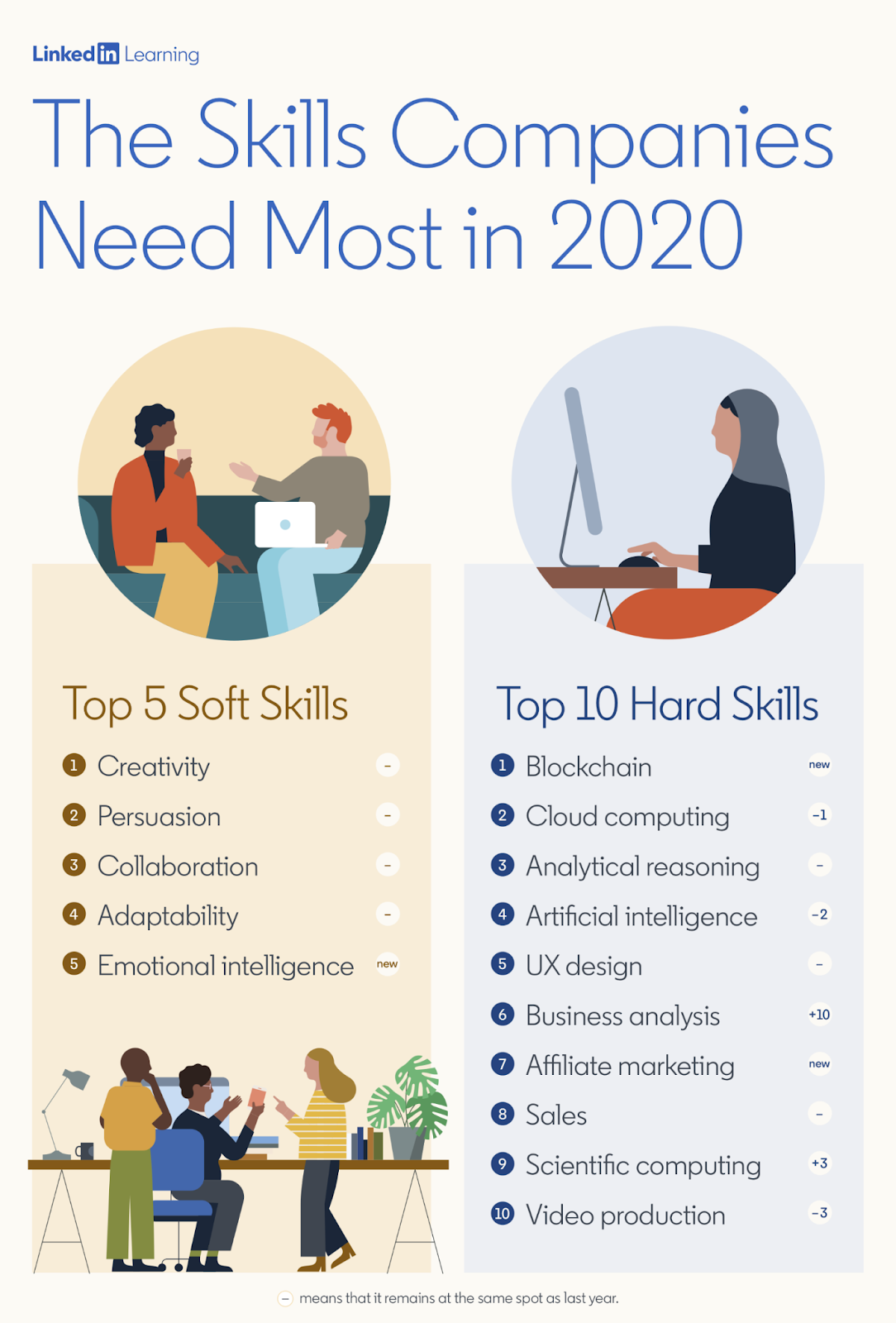
The World Economic Forum report answers this question with an in-depth list of key insights which I encourage you to read.
But if you want the short answer, here’s my conclusion.
The future of work is about automation and robots. The report found that by 2025, the time spent on current tasks at work by humans and machines will be equal.
While an AI software can do creative work (see the AI writing news or the AI doing movie trailers), software and automation robots cannot be innovative.
Innovation requires other skills besides creativity. Read on to find out what these skills are.
If innovation is not (only) creativity, then what is it? Is it a process? Is it a mindset?
First let’s establish the difference between creativity and innovation.
Creativity vs Innovation
On this subject, the best definition of innovation as opposed to creativity I could find is the following:
The key difference between creativity and innovation is that the first refers to generating a fresh and new idea, whereas the second implies initiating new service, product or invention to the market, which was not introduced before.
Creativity vs Invention vs Innovation
Let’s bring another term into the conversation, one that is commonly used to define innovation: invention.
Does invention equals innovation? And if it doesn’t, what’s the difference between invention and innovation?
To answer this question, here’s a great piece of content from Innoway, an innovation consultancy:

They do a great job of explaining the difference between creativity, invention and innovation.
Creativity is the art of turning new and imaginative ideas into reality.
Invention is the creation of a new idea or concept.
Innovation is turning a new concept into commercial success or widespread use.
Zaha Hadid’s amazing buildings are a testament to her creativity, but they are neither inventions, nor innovations.
Leonardo da Vinci, the famous painter was also a prolific inventor. Among his many designs was that of a helicopter which he called the Aerial Screw.

Leonardo da Vinci’s helicopter
If you look at da Vinci’s sketch dating back to the 1480s, you will notice a very strong resemblance with NASA’s Ingenuity Helicopter which took its first flight on Mars earlier this month.
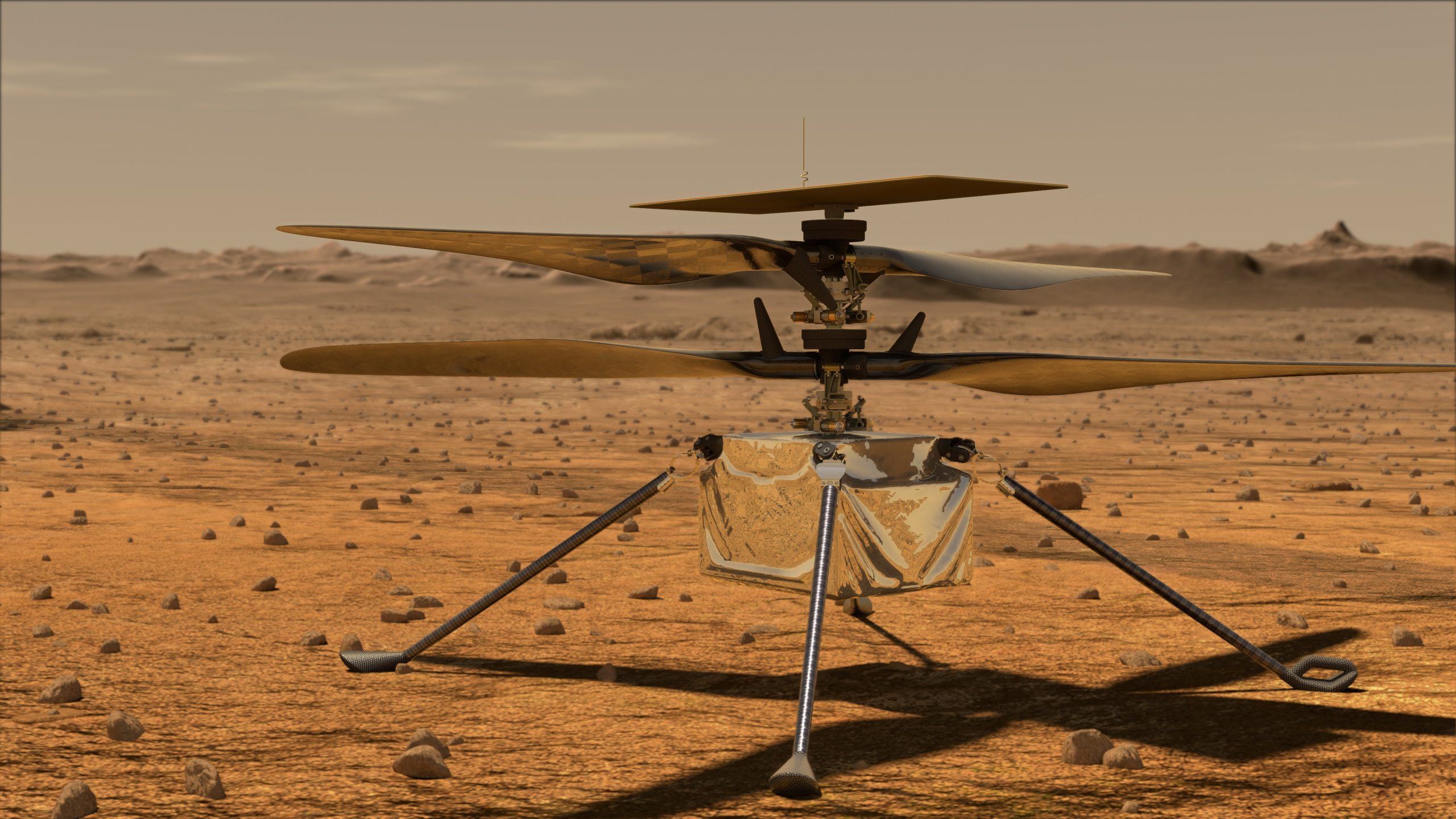
Ingenuity helicopter, source: NASA
Taking inspiration from Leonardo’s concept, the engineers at NASA were prompted to solve a series of challenges related to Mars’ atmosphere. The Red Planet’s atmosphere is 99% less dense than Earth’s which makes it difficult for the helicopter to achieve enough lift.
The Aerial Screw is an invention while the Ingenuity is an innovation.
What is innovation?
Innovation sits at the intersection of customer desires, technology and business opportunities.
Innovation is defined as something new to the market that creates economic and customer value through research, creativity and invention.
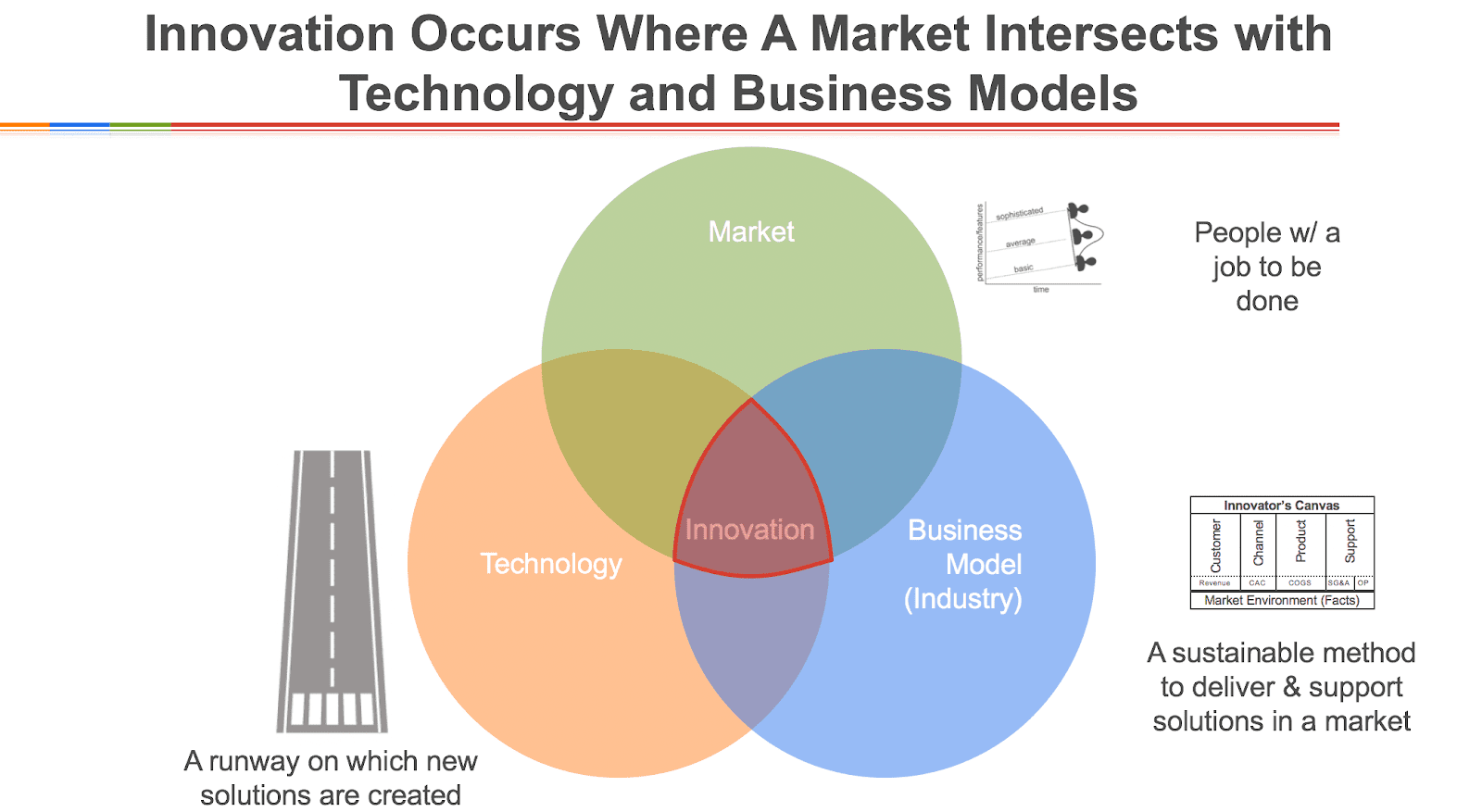
source: ignitionframework.com
Innovation occurs where a market intersects with technology and business models.
The market is composed of people with a job to be done. The business model is a sustainable method to deliver and support solutions in a market. Technology is a runway on which new solutions are created.
Innovators start with the market in mind and what the customers want or need.
Technology is not a goal, it’s a means to an end. Innovators ask themselves How can I use technology to address an unmet need in the market? What technology-driven solution can I come up with that provides customers with a solution to their problems and revenue for the company?
This is what innovators think about when they wake up in the morning and when they go to sleep at night.
The 4 types of innovation

Jake Nielson, a marketing leader with 10+ years of innovation management experience came to the conclusion that there are 4 types of innovation:
- sustaining innovation;
- disruptive innovation;
- new market innovation;
- integrative innovation.
Sustaining innovation
Apple is an example of sustaining innovation. Since the first iPhone in 2007, the company has come up with new iterations of the iPhone every year. Every iteration had new features, improved functionality, beautiful design and innovations.
Disruptive innovation
Airbnb disrupted the hospitality industry. Uber disrupted the taxi industry. Netflix disrupted the DVD mail service. Amazon disrupted brick and mortar commerce. All four provide a better alternative enabled by new technology.
New market innovation
BMW has been manufacturing conventional cars since the early 1950s. Starting with the 1970s, the German car maker has been researching and testing electric cars. Today BMW electric cars are among the best in the market and the company is planning to offer plug-in hybrid versions of all its core-brand models.
Integrative innovation
MailChimp started out as an email provider for small businesses. The company’s email service was so successful that it became one of the most popular in the world. Listening to their customers’ needs, MailChimp expanded its services. MailChimp is now more than an email service provider, it’s an all-in-one marketing platform which empowers its users to build landing pages, create digital campaigns and leverage powerful insights. It supports small businesses to reach their marketing goals faster.
What type of innovation is your company developing?
Join the Conversation
We’d love to hear what you have to say.
Get in touch with us on our LinkedIn Page, Facebook Page, Twitter or TikTok.
The Story behind the Brand: BMW
Before learning about the fascinating history of BMW, we have a surprise for you: the unique opportunity to win one defensive driving training with BMW Driving Academy certified trainers!
Just click on the image below, enter your info and you are one step closer to getting behind the wheel of a BMW.
The Story behind the Brand: BMW
Imagine technology infused with a human touch. A machine whose intelligence is emotional rather than artificial. A vehicle with a voice, facial expressions, and true personality. A car that’s more than a means of transportation, but an ultimate companion.
Welcome to the future!
Arnold Schwarzenegger introduces Dee – The first BMW with a digital soul
BMW is one of the world’s oldest brands (107 this year), and one of the most innovative car manufacturers in the world.
Cutting-edge automotive design, performance and technology becomes reality with every BMW model. Innovation is the foundation on which BMW was built and it’s the power driving the brand forward. Technological breakthroughs provide drivers with a one-of-a-kind immersive in-car experience which BMW is known for.
Before we talk about BMW’s present and the brand’s vision of the future, let’s revisit the past and discover how it all started.
BMW – the early days
One of the top 10 most valuable car brands in the world, BMW didn’t start as a car manufacturer.
The company was established in 1916, in Germany and manufactured aircraft engines through 1945. This explains why its emblem illustrates a rotating propeller.
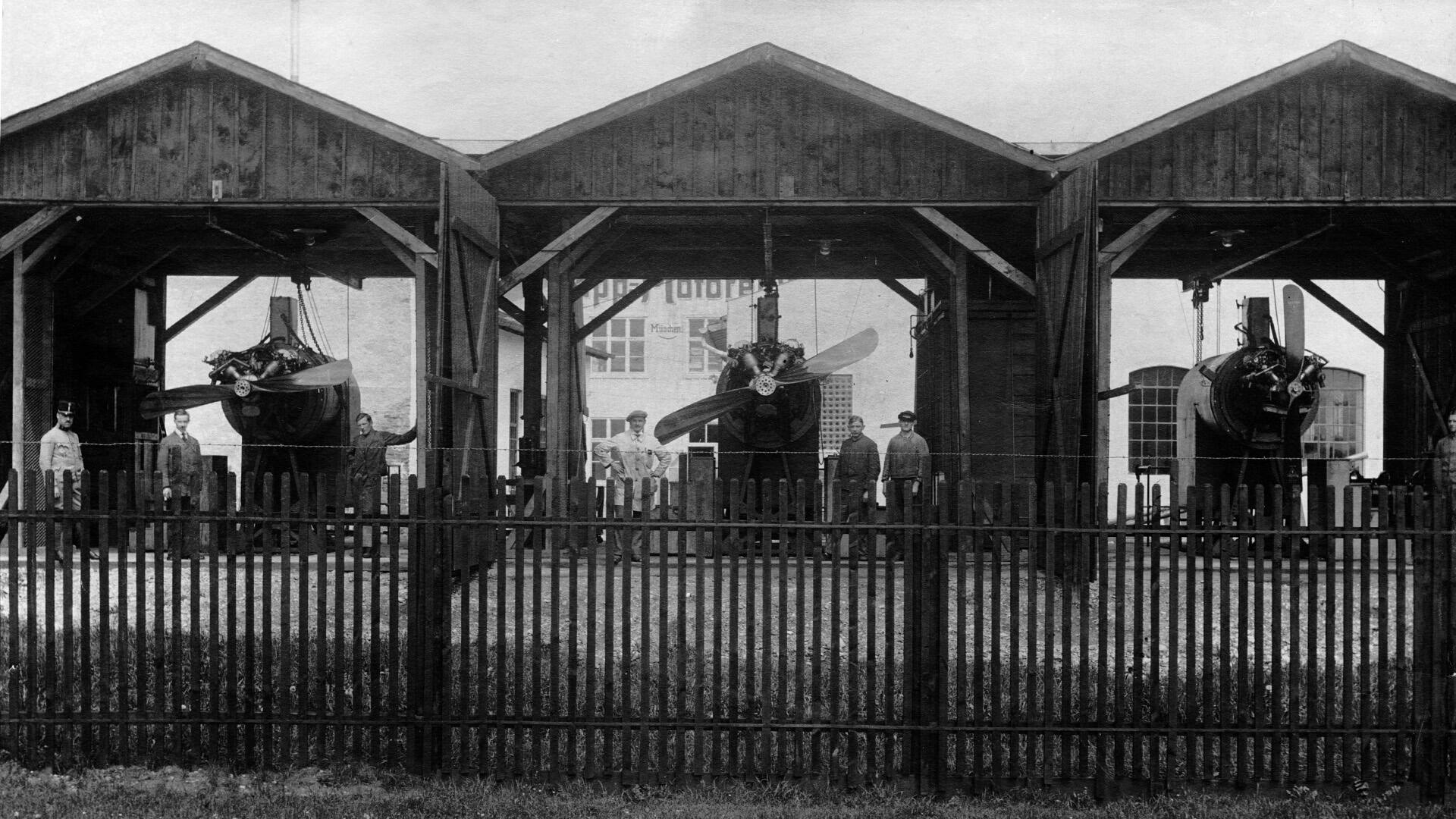
Image credit: BMW
After 1945, BMW switched from building engines for aircraft to building motorcycles and cars around its powerful engines.

BMW R24 motorcycle (image credit: BMW)
The BMW engine established the carmaker as an engineering force to be reckoned with and began producing car models that would become an essential part of the lives of many generations of fans around the world.
Let’s remember some of the most iconic BMW cars!
All-time iconic BMW cars: BMW 507, BMW 1500, BMW 2002, BMW M5

Elvis Presley and his BMW 507 (image credit: BMW)
One of the first post-war cars launched by BMW, the beautiful and elegant BMW 507 could reach 0 to 60 in 9 seconds and was loved by celebrities such as Elvis Presley.
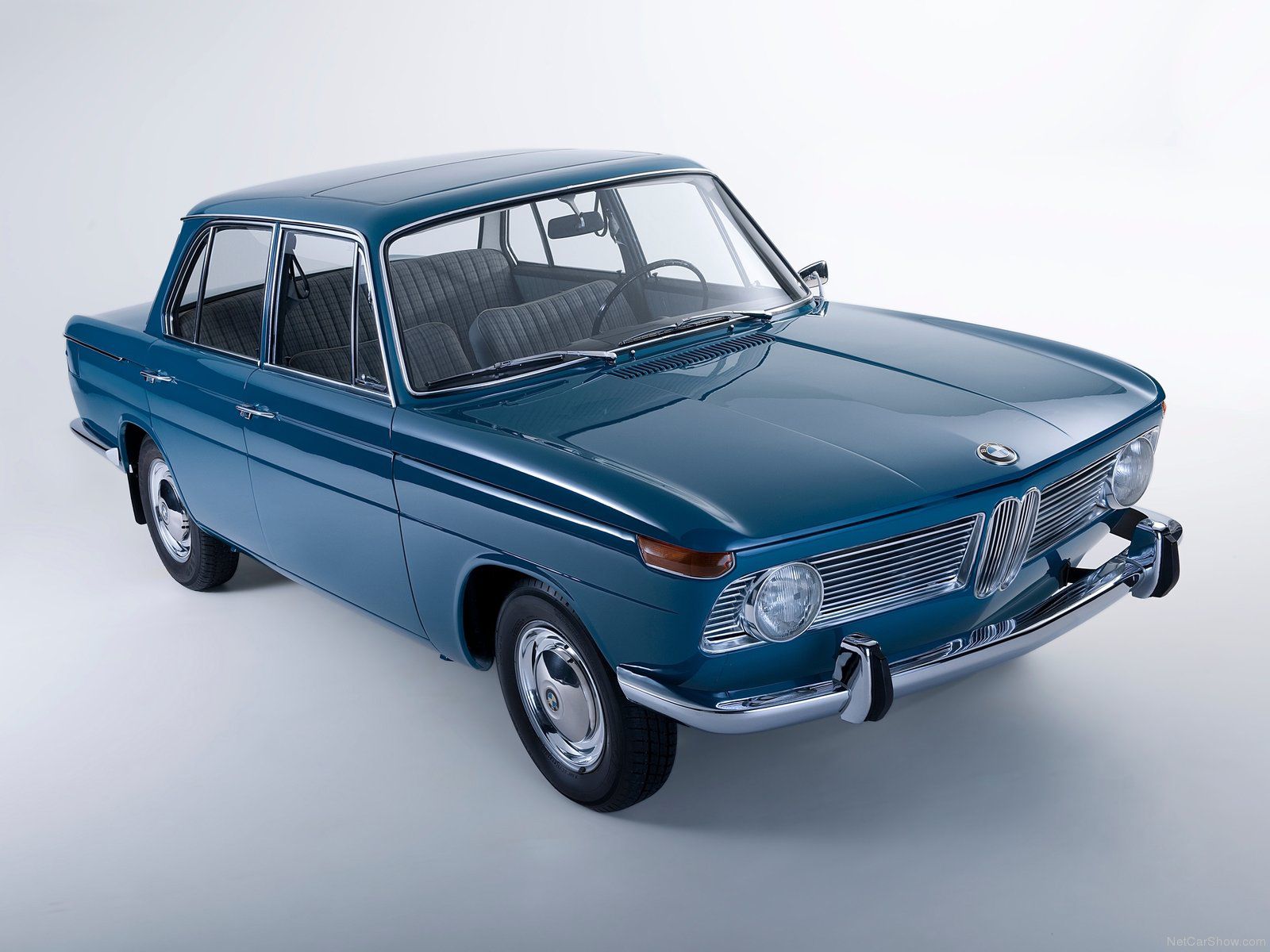
BMW 1500 (image credit: BMW)
In 1961, BMW launched the 1500 model. Compact, sporty and exciting, this car secured BMW’s financial success as a modern and innovative carmaker.
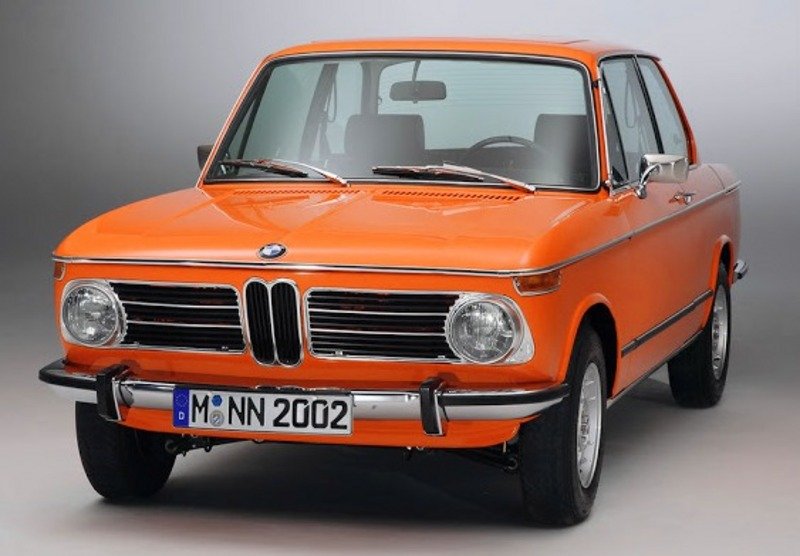
BMW 2002 (image credit: BMW)
Another BMW hit, the 2002 Turbo made history in the 1970s. Doing 0 to 60 in 7 seconds, the BMW 2002 is one of the most sought-after vintage cars in the world.
This car is included in the BMW Art Cars project, a collection of 17 cars serving as canvases for renowned artists from Andy Warhol to Jeff Koons.

The Andy Warhol BMW M1 (image credit: BMW)
Hollywood action movies like James Bond, The Bourne Supremacy and Mission Impossible, featured BMWs such as the M5 model.

BMW M5 in Mission Impossible (image credit: BMW)
10 facts and stories you need to know about BMW
1.In December 1958 in Frankfurt, Germany, Elvis bought a used white BMW 507 after starting his military service. His female fans were leaving lipstick marks on his chalk-white paint every day, so he got it painted red.
2. In 1964, 9 people from East Germany found freedom in West Berlin with the help of a modified BMW Isetta.
3. Did you know the company has been researching and testing electric cars since the early 70s?
4. Andy Warhol painted an M1 in 1979 as part of the BMW Art Car Series. This car is the most photographed BMW Art Car in the world.
5. BMW was the first car manufacturer to establish a think-tank in 1985. Over the years, the think-tank attracted 7000 designers, engineers and technicians to develop ideas and concepts for the BMW vehicles of tomorrow.
6. With more than 700 recognized clubs all over the world, BMW has a bigger following than virtually any other brand in the world. Every year BMW crowns one of these clubs as the BMW Club of the Year.
7. The BMW Group is the first automobile manufacturer worldwide to use lightweight carbon in large-series production.
8. BMW cars are also called bimmers. The nickname “bimmer” for BMW cars originated in the US. It was derived from “beemer” or “beamer,” names for BMW motorcycles that were first coined in the UK in the 1960s and later spread across the globe.
9. The BMW Headquarters in Munich, Germany was declared a protected historic building in 1999 and is often cited as one of the city’s architectural landmarks.
10. BMW’s latest innovation is the Digital Emotional Experience – or Dee. “Digital leadership in the car is not about the biggest screen or the highest processing power or even who writes the most lines of code. No, the only thing that really matters is what the user feels and experiences” says Oliver Zipse BMW Chairman of the Board about Dee.
For owners, BMW equals legacy, passion and joy
From the feel of high-quality materials to the unique sound of its powerful engines, luxury design and exceptional engineering, BMWs are designed to offer sheer driving pleasure.
That’s what every BMW fan will tell you: nothing compares to driving a bimmer. It’s a strong emotional connection that ensures a life-long bond between drivers and their BMWs.
For most of them, it’s their dream car. For many, the BMW passion has been passed down from their fathers and grandfathers.
Some travel across the world to purchase a vintage BMW. Others dedicate months or even years restoring their family bimmer.
What they all have in common is joy; the joy of being a BMW owner.
BMW designs cars for the future. And the future is green.
BMW’s main goal is to produce the greenest electric car.
Here are some of the steps the company has taken toward achieving its dream:
- Alternative textile to leather: a material that is entirely plant-based, looks just like leather and is produced with less CO2 and wastewater;
- Sustainable transport logistics: rethinking network planning to keep the distances as short as possible and then deciding which suppliers to work with. Every kilometer avoided is a CO2-free kilometer. This helps BMW get closer to its goal of reducing supply chain CO2 emissions per vehicle by 40 per cent by 2030;
- Green BMW Plant Munich: designing and implementing a sustainable plant encompassing all aspects of sustainability;
- Sustainably sourced aluminium: starting in 2024, BMW will source aluminium with significantly reduced CO2 emissions from Rio Tinto’s hydro-powered operations in Canada. This approach can save around 70 per cent of CO2 emissions;
- Hydrogen fuel cell technology: the BMW Group has begun production of its BMW iX5 Hydrogen model in 2022. The company is investing in hydrogen because it is a versatile energy source with a key role in climate neutrality.
Developed as a design icon and technology innovator, BMW will continue to offer owners the sheer pleasure of driving premium sustainable vehicles over the next 100 years.
Join the Conversation
We’d love to hear from you.
Get in touch with us on our LinkedIn Page, Facebook Page, Twitter or TikTok.
Blockchain Business News 8-14 February
Stay updated with the latest blockchain news in business: subscribe to our blog notifications!
The blockchain technology market will grow at almost 63% CAGR through 2026 reaching $52.5 billion
According to ResearchAndMarkets’ latest report on blockchain, the blockchain technology market will grow at 63% by 2026 to $52.5 billion.
Important findings for the business environment:
- Distributed ledgers and other blockchain capabilities are rapidly expanding outside finance;
- The preponderance of blockchain revenue will be derived from 3 types of services: Blockchain-as-a-Service (BaaS), Cloud Computing (hosting and data as a service), and Systems Integration;
- Companies like Accenture will lead the charge for systems integration and companies like Amazon, Dell, HPE, and IBM will lead for BaaS and Cloud Computing;
- Integration and operation of Blockchain technology will redefine how various industries operate, dramatically improving efficiencies, and reduce the cost of doing business.

Blockchain fixes the ‘problem of paper’ in the bank guarantee process
In 2019, IBM and three of Australia’s finance heavyweights announced the formation of Lygon, the blockchain-based platform for bank guarantees.
Lygon is touted by the group as reducing the time to issue a bank guarantee from up to one month to one day.
The Lygon platform runs on the IBM public cloud and it leverages the IBM Blockchain Platform, which is built on top of Hyperledger Fabric, an open-source blockchain project from the Linux Foundation.
On February 9, Lygon announced minting the industry’s first standardised digital bank guarantee which solves the problem of paper.
What is the problem of paper?
Lygon CEO Justin Amos explains:
“Paper is slow, this is why we use emails; paper is expensive, and it’s estimated there are over 1 million journeys alone in Australia transporting paper guarantees. {…} Paper often gets lost and can be easily spoilt, subject to fraud, and problematic to amend.” “We shouldn’t underestimate the environmental impact of using paper,” he added.
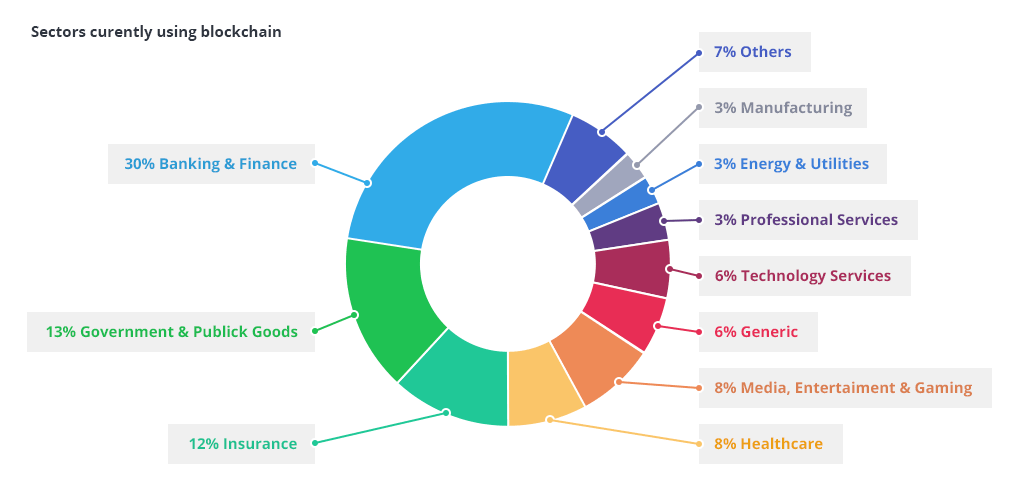
source: dzone.com
BMW backs enterprise blockchain startup Vendia in $15.5m Series A
Vendia is a multi-cloud serverless platform for sharing distributed data in real-time.
The blockchain technology startup has recently announced it had raised a $15.5 million Series A funding round for its serverless SaaS blockchain solution, bringing total funds raised to more than $20 million. One of its investors is BMW i Ventures.
BMW i Ventures is the corporate venture capital arm of BMW and has been actively investing since 2011. With an initial venture capital of 100 million dollars, BMW i Ventures invests in cutting-edge solutions focusing on BMW’s current and future business in the technology and customer & service space.
The team at BMW i Ventures manage investments in technology companies in the US, EU and Israel.
Here are some of the companies the venture capital firm has invested in:
- Verusen is AI-based inventory optimization software;
- Zendrive leverages mobile sensor data to provide actionable insights that improve safety for drivers worldwide;
- Urgent.ly is BMW’s vendor partner for roadside assistance;
- STRIVR platform utilizes immersive VR to help individuals learn faster and more effectively.
Blockchain payments Startup Celo Raises $20M
Celo is a global payments infrastructure that makes financial tools accessible to anyone with a mobile phone.
The platform is a proof-of-stake blockchain built on Ethereum, designed to support stablecoins and tokenized assets while utilizing mobile numbers to secure a user’s public keys.
According to the company’s latest press release, Celo has raised $20 million from renowned investors like a16z (Andreesen Horowitz), whose previous investments include Facebook, Slack, Asana, Lyft and more.
Since its launch in 2017, Celo developed a mainnet, a native token (CELO), a stablecoin (cUSD), a mobile payments app and has been listed on major exchanges including Coinbase and Binance.
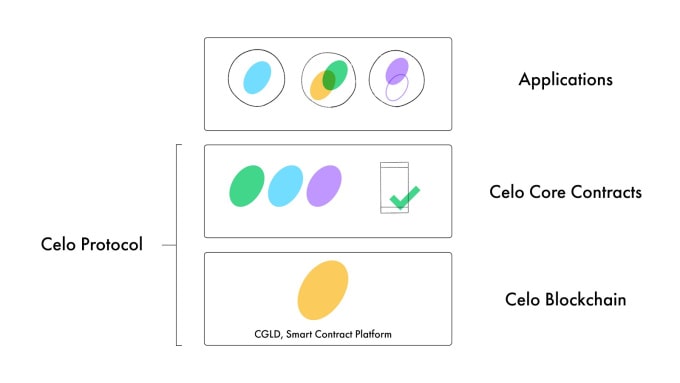
source: techcrunch.com
Blockchain technology to be used against counterfeit products in China
Future FinTech and China Foundation of Consumer Protection have announced they signed a cooperation agreement to use blockchain technology against counterfeit products. The cooperation will expire on January 31, 2026.
Future FinTech is a leading blockchain e-commerce company and a service provider for financial technology. The company’s operations include a blockchain-based online shopping mall platform, Chain Cloud Mall, a cross-border e-commerce platform (NONOGIRL) and an incubator for blockchain-based application projects.
Cloud Chain Mall is the first C2C blockchain shopping mall operated with blockchain anti-counterfeiting tracing technology.
The goal of this agreement is to build the quality and safety credit system for Chinese brands and enterprises and protect the legitimate rights and interests of the enterprises and their brands.
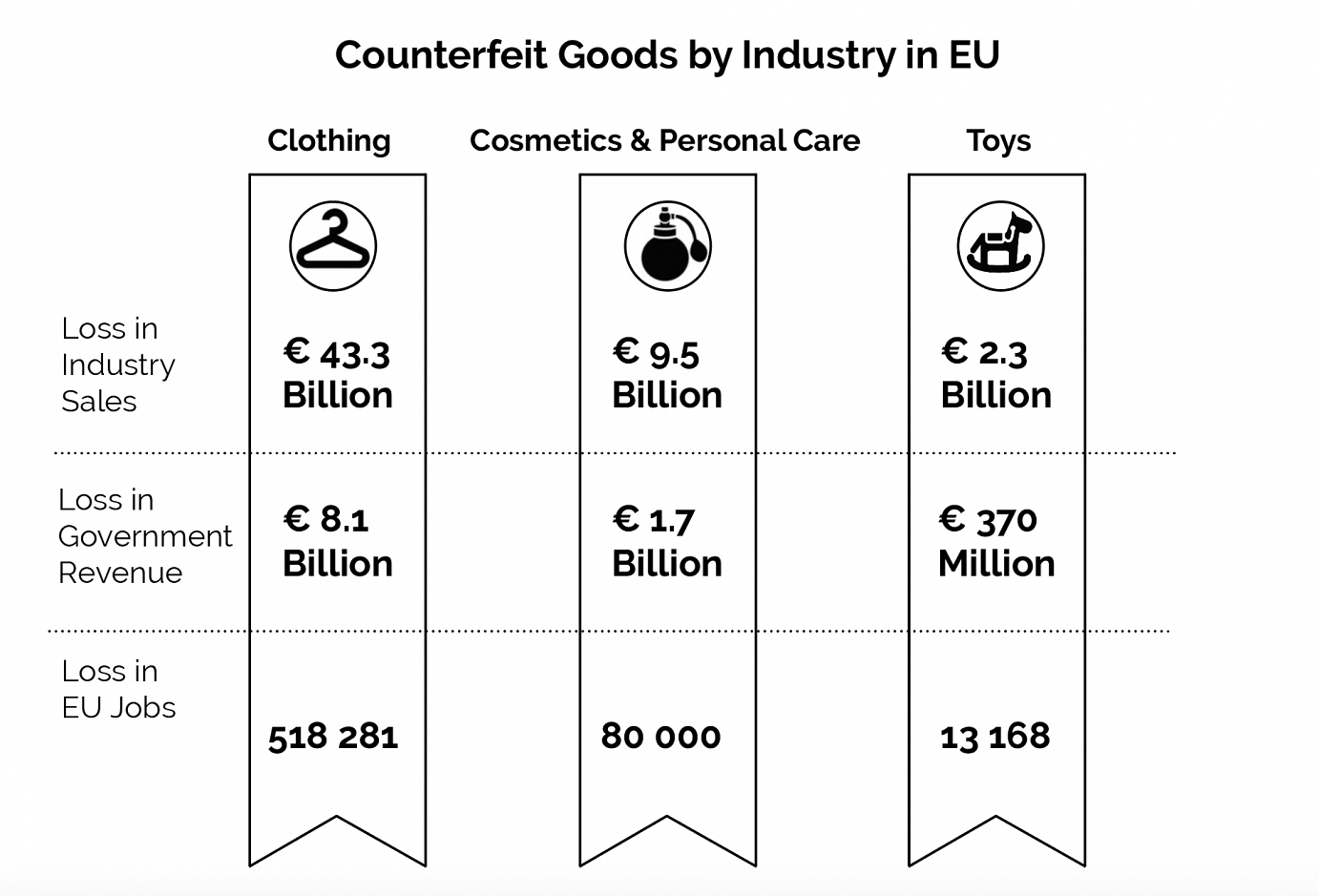
source: Bologna Business School
Quote of the week

Marc Cuban / source: Inc. Magazine
It’s like the early days of the internet’ when a lot of people thought we were crazy
Investor and self-made billionaire Marc Cuban on blockchain
Join the Conversation
We’d love to hear what you have to say.
Get in touch with us on our LinkedIn Page, Facebook Page, Twitter or TikTok.
Porter’s Diamond Model analysis: Louis Vuitton and BMW
The Porter Diamond Model, also known as the Porter Diamond Theory of National Advantage is a business framework that describes a nation’s competitive advantage in the international market.
The model also highlights four factors that companies looking to expand their business internationally can take advantage of to achieve competitiveness in the market.

How to grow your business with 1 strategy framework
The Porter Diamond Model includes 4 attributes
The Porter Diamond Model analyzes a nation’s advantage against four broad attributes that each nation establishes and operates for its industries:
1.Factor Conditions
This attribute defines the nation’s position in factors of production, such as labour, land, natural resources, capital or infrastructure, necessary to compete in a given industry.
2. Demand Conditions
The second attribute of the Porter Diamond Model refers to the nature of home-market demand for the industry’s product or service.
3. Related and Supporting Industries
This attribute reveals the presence or absence in the nation of supplier industries and other related industries that are internationally competitive.
4. Firm Strategy, Structure, and Rivalry
The Firm strategy, structure and rivalry attribute highlights the conditions in the nation governing how companies are created, organized, and managed, as well as the nature of the domestic competition.
For in-depth information on Porter’s Diamond Model, check out this article!
Theoretical knowledge is good but it’s only the starting point. Analyzing real-life examples are the best way to learn about a new business framework or model. It helps you put things in perspective.
For the purpose of this article, let’s look at two global brands and how the Porter Diamond Model is applied to them: Louis Vuitton and BMW.
Louis Vuitton – a Porter Diamond Model case study

With a brand value of over $51 million in 2020, Louis Vuitton is the most valuable luxury brand in the world.
France is the company’s home base but since its inception more than 150 years ago, Louis Vuitton has expanded in 50 countries and has a retail network of over 4,910 stores worldwide.
What is the secret of Louis Vuitton’s success? Read Louis Vuitton: The story behind the brand.
Louis Vuitton: Factor and demand conditions
When you think of luxury, you think of France.
France is the world’s capital for luxury goods, haute-couture fashion, cosmetics, perfumes and accessories and the home for famous international houses such as Chanel, Dior, Givenchy, L’Oreal, Clarins, Lancome, Hermes, Celine, Louis Vuitton etc.
It’s not by chance that France has such a strong cluster of luxury brands.
The country’s luxury goods industry has a long history which began more than 500 years ago.
Eight hundred years ago, France was Europe’s silk centre with a booming silk industry.
King Louis XIV, the country’s most fashionable royalty recognized the importance of luxury goods to the national economy. Under his leadership, the country developed a powerful textile industry which in turn boosted trading and the country’s infrastructure.
Fast forward to the 21sth century, France is synonymous with high fashion and luxury goods.
The fashion and luxury goods industry has a direct turnover of €150 billion. The share of French GDP generated by fashion is 2.7%. There are 1 million jobs in the fashion industry (source). The workforce in the industry is highly skilled. Experienced craftsmen or seamstresses sometimes receive an 18-month to 2-year training.
France was the perfect country for Louis Vuitton to be born in. The country provided the luxury brand with perfect factor conditions.
The French are known for their good taste and high fashion style so the brand had to work hard and innovate to meet the needs of such demanding customers (demand conditions).
This, in turn, helped them expand internationally and retain their competitive advantages.
With 37% of global sales, the Asian market is Louis Vuitton’s biggest revenue source.
Surveys show that 92% of Japanese women own a Louis Vuitton handbag and sales in China rose by more than 50% and in August last year when the brand reported record sales at its largest store in Shanghai.
Louis Vuitton: Related and Supporting Industries
The country also ranks high in the Related and Supporting Industries attribute for the luxury goods industry.
The industry’s development has been in close relationship with many subsectors such as textile and apparel, garments and embellishments, and sewing machinery. It’s an ecosystem whose members pressured each other to improve and innovate for mutual benefit.
Louis Vuitton: Firm Strategy, Structure, and Rivalry
In France, the luxury goods industry is highly competitive.
With pressure from competitors, online sales increase and technology disruption, Louis Vuitton’s business strategy is to grow through acquisitions.
The brand is part of LVMH, the world’s largest conglomerate which came to be in 1987 when Louis Vuitton merged with champagne and cognac producer Moët Hennessy.
Over a period of 34 years, LVMH acquired more than 70 famous luxury brands. The latest acquisition is Tiffany & Co.

How to grow your business with 1 strategy framework
BMW – a Porter Diamond Model case study
BMW: Factor and demand conditions
Germany played a major role in the history of the automotive industry.
It was Karl Benz, a German mechanical engineer who designed and, in 1885, built the world’s first practical automobile to be powered by an internal-combustion engine. Today, Germany is renowned for its powerful and innovative cars.
The largest industry sector in Germany is the automotive industry. Vehicles make up almost 17% of total exports.
The automobile industry generated roughly 426 billion euros in total sales in 2018.
With 882,000 manufacturing jobs in the automotive industry, Germany ranks first among European countries.
The country is a primary location for innovative car manufacturers and suppliers and is home to powerful brands such as BMW, Audi, Volkswagen, Mercedes etc.
One of the factors underlying German success is that the workforce is created. German students benefit from the country’s dual system of education where they combine vocational education with apprenticeships. This type of education supplies the country with a steady flow of highly skilled workers.
The German automotive industry benefits from a strong industrial core, first-class infrastructure, a highly-skilled workforce and cutting-edge research and development.
BMW has become a prestige global brand, operating 31 plants in 14 countries, including the largest car manufacturing plant in the world.
BMW has taken advantage of the factor conditions provided by the country. Ranked 2019’s 3rd most valuable car brand in the world, the company didn’t start as a car manufacturer, but as an aircraft engine manufacturer.
The brand’s success relies on its outstanding car design, technological innovation and workforce.
As the Porter Diamond Model recommends, the brand grows its own workforce. The BMW Manufacturer-Specific Advanced Training (MSAT) program provides students with extensive training on BMW vehicles thus preparing them to work for the company.
BMW: Related and Supporting Industries
BMW cars are high-quality automobiles.
The brand carefully selects suppliers in subsectors of the automotive industry such as parts and components, heating, ventilation, air conditioning, electronics etc. BMW depends upon a network of over 100 auto parts suppliers from all over the globe, though approximately 50% of its suppliers are either located in Germany or are subsidiaries of German-based companies (source).
BMW: Firm Strategy, Structure, and Rivalry
BMW faces tough competition both domestically and internationally.
The company’s competitors are legacy brands much like itself.
On the local market, car automakers differentiate themselves through brand positioning.
In recent years, German car manufacturers have been struggling to adapt to new technological challenges (car connectivity, e-mobility), environmental challenges (green technology) and new entrants such as Tesla.
To stay ahead of the competition, BMW is using a competitive strategy which builds on market relevance, competitive services and research and development.
And it continues to make cars that consumers can emotionally relate to.
Join BRAND MINDS 2023 and learn strategic business moves to uncover new markets and build a thriving business from Bestselling Author of Blue Ocean Strategy Renée Mauborgne.

We’d love to hear what you have to say.
Get in touch with us on our LinkedIn Page, Facebook Page, Twitter or TikTok.
Hofstede’s cultural dimensions theory in advertising: KFC, BMW and Heineken
Hofstede’s cultural dimensions theory is a framework for measuring cultural dimensions from a global perspective. It is a useful business tool which provides insights for organizations looking to extend their business internationally.
I was curious to know if this tool is relevant in advertising so I selected three brands, KFC Singapore, BMW China and Heineken Italy and analyzed one ad for each brand.
To learn the Hofstede rankings of each country, I used this tool.
KFC Singapore

Power distance 74
Watching this ad by KFC Singapore, I see three cultural dimensions at play: power distance, individualism vs collectivism and masculinity vs femininity.
According to Hofstede’s theory estimations, Singapore ranks 74 at power distance. Power distance is the extent to which the less powerful members of organizations and institutions accept and expect that power is distributed unequally.
Singapore’s high score on this dimension indicates that it is a society that values hierarchy. This can be seen in the Singaporeans’ family meals customs which say that no one eats until the oldest member of the family lifts the spoon. In Singapore, older people are respected and listened to.
Individualism 20
The individualism vs collectivism dimension shows to which extent people feel independent or interdependent as members of larger communities. As you can see, Singapore ranks low in individualism which makes the society a collectivist one.
In the collectivist culture, family is at the heart of everything. A person views himself as a member of the family rather than an individual.
Masculinity 48
In regards to the masculinity dimension, Singapore ranks 48. Masculinity is the extent to which the use of force is endorsed socially.
Singapore’s rank tips the scale a little bit more to the feminine side. This means that conflicts are avoided and reaching a consensus is more important than being right.
What do we see in this ad?
We see a family preparing to eat together with the oldest, probably the grandmother sitting at the head of the table. As per tradition, everyone is inviting the grandmother to start eating. Although polite, what their invites do is repeatedly interrupt the hungry woman who doesn’t need convincing in front of a delicious bowl of KFC chicken. Because she doesn’t want to tell them off and ruin everyone’s good mood, she puts on a pair of headphones and starts eating with great pleasure.
BMW China

Power distance 80
This ad for the car manufacturer’s Chinese market pulls the strings on the viewer’s heart. It is longer than the average ad and uses this time to tell the story of a modern Chinese family with a hard-working white-collar father.
His son is trying to understand why his father is sometimes late to pick him up from kindergarten or even goes back to the office to work through the night. The only good reason he can think of is that his dad is a superhero and he gets wrapped up in doing superhero stuff.
China ranks very high in power distance. It is a country where subordinate-superior relationships tend to be polarized and can lead to power abuse by superiors.
We see this aspect of Chinese culture through the kid’s eyes: he imagines his father’s superiors as villains demanding him to dedicate his free time to the job and to making money because making money is more important than his son.
In his imagination, his father is fighting to overcome every obstacle that keeps him from coming home using every ability in his power: kung-fu strikes, negotiation or his bare fists. Like any other hero, he needs a sidekick to be successful and his BMW fulfils this role with flying colours.
Individualism 20
Chinese society ranks low in individualism. Although the ad focuses mainly on the kid, we can still see how important and how dedicated the father is to his son. He may be late, but he eventually shows up.
Masculinity 66
China is a masculine society where individuals are success-oriented and career-driven. And people have traditionally established roles.
As we can see in this ad, the mother is the child’s main caretaker and possibly a stay-at-home parent with the father having a well-paid job. Also, it’s not a coincidence that he is portrayed as a hero winning at everything he sets his mind to.
Heineken Italy
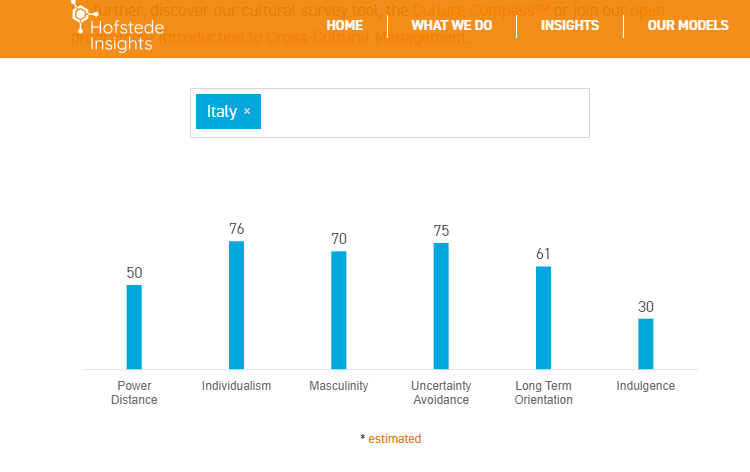
Masculinity 70
In this ad, we see Nico Rosberg, winner of the 2016 F1 World Championship and his father, Keke Rosberg, who also won the F1 World Championship, but 34 years earlier.
Competition is in their blood, both on the race track and in their father-son relationship also. Everything is a competition and winning is everything for this duo, from fishing the largest salmon to playing a game of tennis or throwing a paper ball into the trash can. And the loser gets to drive the car.
In the Behind the scenes video, Nico shares that to some extent, the ad reflects their relationship in real life. Playing a few games of tennis was a way for him and his father to spend time together.
Looking to expand your business into new markets?
Join BRAND MINDS 2023 and learn new strategies to create demand for your business from Renee Mauborgne, Bestselling Author of Blue Ocean Strategy.

Join the Conversation
We’d love to hear what you have to say.
Get in touch with us on our LinkedIn Page, Facebook Page, Twitter or TikTok.
BMW Is Riding The Ageing Workforce Trend
In its 2018 report, PwC identified 5 global Megatrends predicted to shape our world in the years to come.
One of the five megatrends is Demographic and Social Change and we are already seeing its consequences: increase of the ageing population. People are living longer; this brings disruption to the traditional life cycle of education, work and employment.
Learn more: PwC – 5 Megatrends Affecting Your Business in 2019
According to PwC’s findings, the fastest growing segment of the population is comprised of people over 65. By 2030 there will be 390 million more of them than in 2015.
An ageing workforce means higher healthcare costs, lower productivity and increased absenteeism rates. At the same time, an ageing workforce is an untapped resource of experienced and skilled workers – it’s both a challenge and an opportunity.
Learn more: This Platform Connects Older Workers With Businesses
Are organisations prepared to deal with this trend?
How are companies taking advantage of this opportunity?
Here is how BMW maintained its ageing workers and put their experience and skills to good use while making small changes as presented in an HBR article.
The Problem
BMW is one of the companies that will not be impacted negatively.
The company’s top management saw this demographic shift taking place back in 2007. They became increasingly concerned when they realized the average age of the plant’s workers will rise from 39 to 47 by 2017. Older workers mean lower productivity levels which the top management was determined to prevent.
The German car manufacturer began looking for a solution which would allow its valued workers (although older) to remain employed and at the same time maintain their productivity level up.
The Solution
The BMW top management came with the following solution: design ergonomic workplaces and rotate workers every couple of hours.
To test their solution, they chose the carmaker’s plant in Dingolfing, Bavaria. They transformed one of the plant’s production line to accommodate the needs of 42 workers with an average age of 47. They reached out to these workers and enlisted their support.
The Changes
The production line was changed upon the older workers’ requirements as follows.
- A wooden floor was installed to prevent pain in the knees;
- The workers were given weight-adapted footwear to reduce joint strain;
- Barbershop-style chairs were installed to allow workers to work sitting down or to relax for short periods during breaks;
- Each workstation was fitted with vertically adjustable tables which adapted to each worker’s height, reducing back strain;
- The workers received flexible magnifying lenses to reduce eyestrain and mistakes;
- Job rotation across workstations during a shift in order to balance the load on workers’ bodies;
- The workers learned and practised strength and stretching exercises.
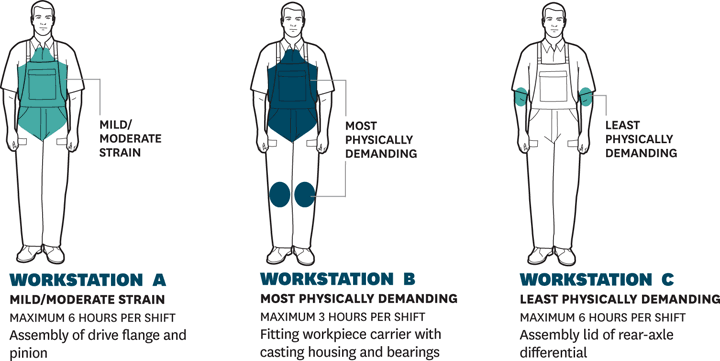
Job Rotation / image: hbr.org
The Cost of Transformation
Surprisingly, these changes were not expensive. The total cost of transforming the workstations at the production line in order to meet the physical needs of the older workers amounted to around euro 40,000.
The Results
- 7% increase in productivity in one year which equals the productivity of lines staffed by younger workers;
- The line’s target output was increased to 530 units per shift in February 2009, in keeping with the plant’s ambitious goals;
- In three months, the quality target was achieved – 10 defects per million; in the following months – zero defects;
- By June 2009, absenteeism had dropped to 2%, below the plant average.
The experiment was a success and BMW rolled out the 2017 production line model to its plants worldwide.
Conclusion
The BMW case of implementing ergonomic changes to the workplace to reduce the physical strain on workers’ bodies is a great example of organisational problem-solving.
The transformation process was successful due to these 6 factors:
- Employees felt secure to express their ideas freely;
- Top management refrained from controlling the process of generating ideas and never criticized or evaluated them;
- Workers communicated their ideas easily;
- All ideas were generated exclusively by employees;
- Top management gained employee’s trust;
- Workers were proud to contribute to this experiment.
How to implement change in your organisation
Here are 4 simple steps to implement change in your organisation:
- Pinpoint the problem with the support of your top and middle management;
- Ask them to run an experiment;
- Invite your employees to create the solution;
- Make the necessary changes to implement the solution.
BMW is ready to tackle the ageing workforce trend.
Is your organisation ready?
3 Snapchat Campaigns powered by Augmented Reality
Snapchat is undoubtedly leading the user experience of augmented reality in social media. In 2016, the Pokemon GO frenzy took the world by storm and showed the incredible appeal of AR for users.
In the following years, brands have looked for ways to use AR to raise engagement on Snapchat and draw users’ attention to their products.
Discover 3 brand campaigns powered by augmented reality and delivered through Snapchat:
BMW
As part of its 2017 ad campaign to launch the BMW X2, the famous carmaker became the first brand to create a 3D augmented-reality version of a product with Snapchat.
During the campaign, consumers on Snapchat began seeing ads from BMW that linked to the augmented-reality version of the new car. When someone swiped on the ad, it opened the camera and the gold car appeared in the frame. A person could then virtually walk around the car and see all its details and even change its color.
Nike
Nike partnered with Snapchat and Shopify earlier this year for the pre-release of Air Jordan III Tinker. 2018 marks 30 years since Michael Jordan made history with his free throw line dunk in 1988 Slam Dunk Contest win. It is one of the most memorable moments in NBA history and Nike wished to celebrate it.
Using 3D and augmented-reality technology, Nike brought Michael Jordan through Snapchat to the younger generation that has never seen him play. But the experience didn’t stop here. With a tap on the screen, the user was able to purchase a pair of Air Jordan III Tinker which was delivered to their home address within two hours. The pre-release shoes were sold out in 23 minutes.
Watch the video here.
Foot Locker
The holidays tend to bring out the best in advertising, leading to fierce competition to make an impact. This often means clever brand partnerships.
One such example is the collaboration between Foot Locker and Snapchat on Christmas 2017. Foot Locker designed an unboxing experience for Snapchatters in which they delivered animated Jordans that users could customise and dunk.














